

SID AND REVA DEWBERRY DEPARTMENT OF CIVIL, ENVIRONMENTAL, AND INFRASTRUCTURE ENGINEERING + CIVIL ENGINEERING INSTITUTE 2023 ANNUAL REPORT

BUILDING IN A CHANGING WORLD
In response to human made climate change, the focus of civil engineering research has shifted towards resilient and sustainable solutions. This transformation includes such endeavors as designing infrastructure capable of withstanding extreme weather events, forecasting changes in maritime transportation, and assessing how environmental factors affect human populations.
BUILDING BETTER
Through continual innovation and development, civil engineers are implementing groundbreaking solutions that prioritize safety, improve infrastructure resilience, and minimize environmental impact. These efforts span from pioneering construction materials with reduced carbon footprints to designing smarter, more adaptable structures capable of withstanding natural disasters.
BUILDING A STRONG FUTURE
Our civil engineering students and faculty are mastering the skills to build for the future. Their research and scholarship involve integrating cutting-edge materials and technologies, preparing them to create robust structures adaptable to evolving demands. Their dedication is shaping a future where communities thrive amidst challenges, laying the groundwork for a connected and resilient world.
CEIE+CEI 2023 ANNUAL REPORT
Cover: From fungi-strengthened structures to detailed air pollution modeling, Mason’s College of Engineering and Computing’s CEIE Department is spearheading crucial research and developing timely curricula toward sustaining a thriving and innovative world. To learn a bit more about us, go to civil.gmu.edu/about
1 TABLE OF CONTENTS Letter from the Interim Department Chair 2 Letter from the Civil Engineering Institute Chair 3 BUILDING IN A CHANGING WORLD Assessing climate change costs on careers and coastal communities 4 Cool lessons from Utqiaġvik, Alaska 6 Hot pipes: Dangerous pathogens may thrive as water distribution systems warm 8 New paper in Science quantifies mortality risk from power-plant pollution 10 BUILDING BETTER Mushrooming feats of engineering 12 Big data may lead to safer roadways, lower emissions 14 Limiting leaking leachate 16 BUILDING A STRONG FUTURE Mason’s ASCE teams competed in 2023 18 Civil engineering student builds career from the ground up 20 2023 Civil engineering graduates .......................................................... 22 Nicholo Gadiana, student graduation profile 24 Student notable achievements 25 INSTITUTE UPDATES CEIE faculty in university leadership positions 26 Faculty notable achievements................................................................ 27 Full-time faculty 28 Adjunct faculty 29 CEI current members 30 Snapshots from 2023 CEI luncheon 32 Donors make it possible 36 By the numbers ...................................................................................... 37
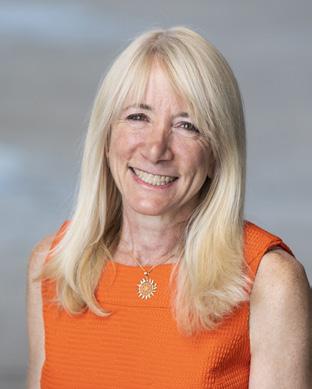
Dear alumni and friends,
It is my great pleasure to share our annual report for 2023. This report provides only highlights of the hard work and successes of our students, staff, and faculty that have helped to make us an academic force in Virginia.
We are a diverse and accepting community. Evidence of our open climate is an undergraduate student population with 43 percent from under-represented minority populations. Our graduate programs are equally healthy with MS enrollment up by 20 percent from 2022 and 14 CEIE doctorates awarded in 2023 alone. With new structural engineering assistant professors, Xijin “Emma” Zhang and Catalina Gonzalez-Duenos, our faculty also grew to 21 with an increase in tenured and tenure-track faculty by 13 percent in 2023. Our civil engineering faculty contribute to the university through their leadership, with four faculty members holding administrative posts at the university, including the role of interim provost.
This report features some of our contributions, with a focus on climate and sustainability. Our faculty are devoted to preserving and advancing the built environment and its support for society for a long and healthy future. They are protecting groundwater from hazardous substances, understanding how emissions from human activity impact human health and morbidity, shoring up coastlines in the face of human-made climate change, and we are excited to share a sample of these efforts with you.
As 2024 begins, our Engineers for International Development (EfID) student chapter begins its collaborative work with a local community, its government, health department, and water authority to create a long-range plan for a complete water supply and distribution system in Los Andes, Costa Rica. The project begins with enhancing an existing well and installing a new deep well water pump powered by renewable energy. Our students are also excited to host the Mid-Atlantic West ASCE Student Symposium with our field’s favorite competitions, like racing student-designed and -built concrete canoes.
From the tropics of Costa Rica to the Arctic tundra, our department continues to expand its reach and contribute to improving the planet for all. I hope you enjoy reading about our accomplishments and graduates. We remain grateful for your interest in civil engineering at Mason!
Sincerely,
 Elise Miller-Hooks, PhD, Professor, and Interim Department Chair
Bill and Eleanor Hazel Endowed Chair in Infrastructure Engineering
Elise Miller-Hooks, PhD, Professor, and Interim Department Chair
Bill and Eleanor Hazel Endowed Chair in Infrastructure Engineering
2 CEIE+CEI 2023 ANNUAL REPORT

Dear members and friends,
As George Mason University is reaffirmed as Virginia’s largest public research university with enrollments surpassing 40,000 students, a first for the Commonwealth, the Civil Engineering Institute (CEI) is privileged to continue our mission to bring together industry partners, faculty, and students to foster meaningful engagement across the full spectrum of our industry and between current and future practitioners. We remain eager and invigorated to continue our decades of partnership with the brilliant and talented Mason faculty as we advise and support our future civil engineering workforce through a variety of programs and investments.
The CEI board of directors and members integrate and serve the Mason community as adjunct professors, student mentors, leads, and supporters for vibrant student groups like Engineers for International Development and the student chapters of ASCE and SAME. CEI also supports the school’s continued ABET accreditation, gives industry perspectives to student curriculum, and sponsors, provides resources, and raises monies for student scholarships, programs, and engagement.
At this year’s luncheon, we honor Lt. Gen. Thomas P. Bostick (Ret). General Bostick served as the 53rd Chief of Engineers and Commanding General of the U.S. Army Corps of Engineers (USACE), where he was responsible for most of the Nation’s civil works infrastructure and military construction. I had the honor of serving as a young program manager under General Bostick’s extraordinary leadership in Iraq when he commanded the Gulf Region Division for USACE. Following his retirement from active duty, General Bostick served as the Chief Operating Officer and President for Intrexon Bioengineering. He is a highly sought-after speaker and consultant who can help develop and build teams that accomplish the seemingly impossible through future-focused strategies for leaders and their people. We are honored to celebrate his service and accomplishments.
Whether you are a recent graduate, an active practitioner, or a retired civil engineering veteran, CEI welcomes you. If you are interested in supporting or joining the CEI, please contact us. We are happy to answer your questions and discuss how you can make a positive contribution to our future civil engineers and the broader civil engineering and education space. I hope you enjoy reading this report and learning more about our efforts.
Sincerely,
 George Guszcza, D.Eng, CPEM, CCM Chair, Civil Engineering Institute Board of Directors
George Guszcza, D.Eng, CPEM, CCM Chair, Civil Engineering Institute Board of Directors
3

1 BUILDING A CHANGING WORLD
Assessing climate change costs on careers and coastal communities
Coastal communities worldwide are seeing stronger storm surges, more powerful waves, and potential devastation to homes, infrastructure, jobs, and a way of life. Associate professor Celso Ferreira studies the impacts of these threats and suggests ways to manage them.
In May 2023 he co-authored a paper, “Jobs at Risk: Sea Level Rise, Coastal Flooding, and Local Economies,” with the non-profit Resources for the Future. According to the study, approximately 263,500 jobs and $11.1 billion in wage income will be threatened by flooding in the Chesapeake Bay region by 2050.
In addition to quantifying the economic impact of coastal flooding, the paper recommends ways to prepare for it: aiming government spending at developing areas outside current and future flood zones; giving coastal communities financial aid with the condition that businesses be in areas with limited exposure to flooding; providing aid to enterprise zones that incorporates requirements for resilience, such as infrastructure changes to reduce potential flood damage; using FEMA dollars to relocate businesses to different areas within their existing community but out of flood zones; and encouraging communities to change zoning rules to account for climate change.
In a related project with The Nature Conservancy (TNC) and the Maryland Department of Natural Resources (MDDNR), Ferreira and colleagues are assessing the

ability of tidal wetlands, marshes, and sea grass beds to absorb storm surges and waves, protecting developed areas.
Ferreira says, “We place sensors that measure wave energy across the coastal habitats during extreme coastal storms, capturing unique data documenting its flood protection capacity. We then use computer models to predict future scenarios through 2100.”
These coastal barriers are essential to absorbing destructive storm surges. The first few feet of tidal marsh can reduce wave energy by 90 percent, according to TNC. In addition, marshes can trap tidal water sediment, allowing them to grow naturally with sea level rise. “Living” shorelines improve water quality while creating a habitat for fish and increasing biodiversity.
The researchers believe that their findings will provide input for statewide models to understand how habitats will transition as sea levels rise, allowing Maryland and other states to make strategic decisions about anticipating and responding to such changes. g
Left: Ferreira visits the Chesapeake Bay to study the impacts of climate change
5
from Utqiaġvik, Alaska Cool lessons

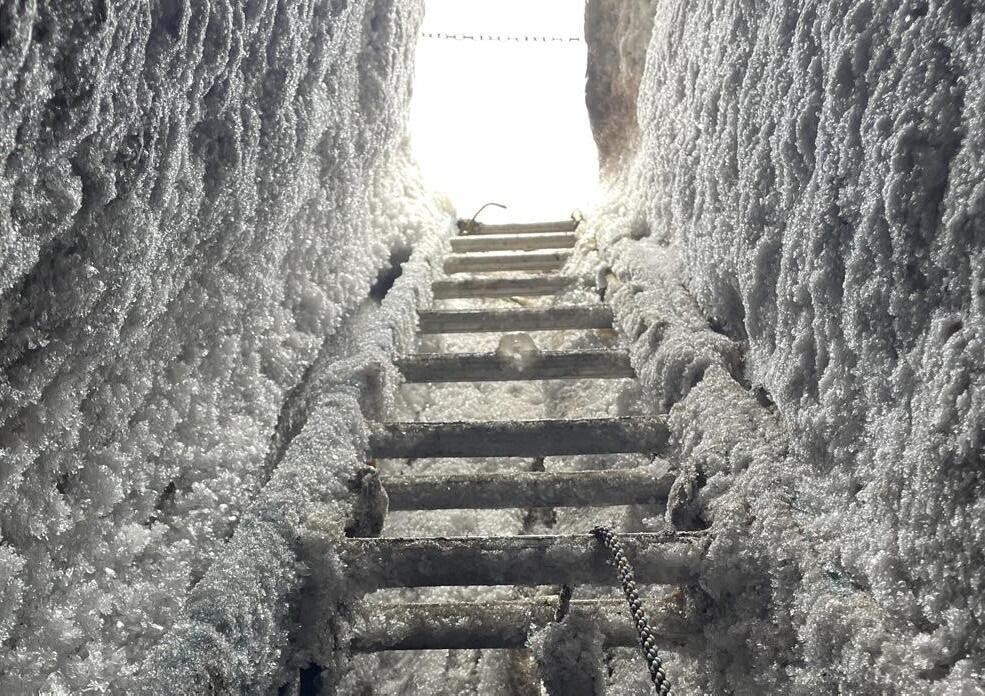
Last summer, computer modeling and the Arctic ecosystem converged at the top of the world. Elise Miller-Hooks, Celso Ferreira, and a team of National Science Foundation (NSF) researchers convened at the Barrow Arctic Research Center. These NSF Navigating the New Arctic researchers traveled to the remote location to attend the Permafrost and Infrastructure Symposium in Utqiaġvik, Alaska, some 320 miles north of the Arctic Circle.
The symposium brought together scientists, regional planners, village leaders, project managers, and federal and local policy makers. The team attended to learn and grow their research—and to share. The team benefited from the visit and look forward to future collaborations.
The two are looking at the challenges facing the Arctic from different research perspectives. Miller-Hooks’ research focuses on forecasting and modeling shipping and maritime transportation changes that will come as the Arctic sea ice thaws and the sea level rises. Ferreira specializes in developing strategies to make coastlines more resilient and sustainable.
Both were impressed with the resilience and knowledge of the local communities. Miller-Hooks said “What I learned from the community and tribal leaders was invaluable. I learned that they really want co-production. They want to be heard. They want us to understand what they know and bring it into our research. We must not ignore their experience and try to push research findings on them, but instead, learn together and jointly develop solutions.”
Ferreira also believes that Mason can play a significant role supporting the well-being of the local people and resilient infrastructure in the region. g
Top: Elise Miller-Hooks (on left) and Celso Ferreira near the northernmost point in the United States. Bottom: A ladder leads to permafrost below ground. Right: Celso Ferreira and NSF researchers explore the permafrost.
6 1 BUILDING A CHANGING WORLD

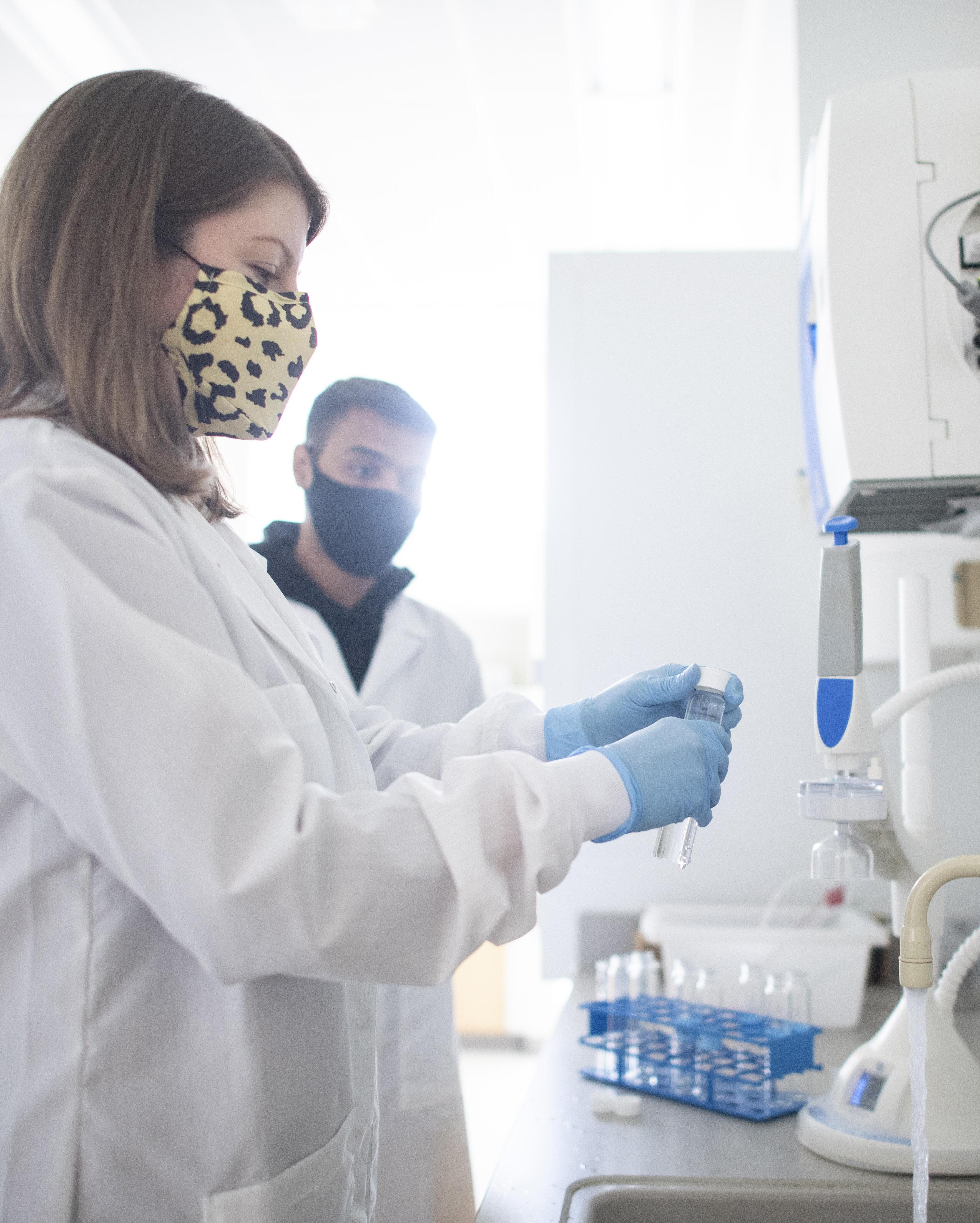
1 BUILDING A CHANGING WORLD
Hot pipes:
When Kirin Emlet Furst heard a friend in Louisiana complain that their tap water never ran cold, she began to wonder about the impact of global warming on drinking water distribution systems.
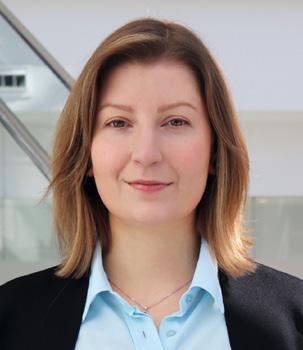
Furst, a CEIE professor who specializes in water quality engineering, has received a grant from the National Science Foundation to examine how rising temperatures are affecting drinking water distribution systems in several areas across the United States. Specifically, she’s assessing disinfection processes to safeguard against pathogens in extremely hot environments.
Furst brought her ideas to Katherine Graham at the Georgia Institute of Technology, a friend of Furst’s since they met while earning PhDs in environmental engineering at Stanford University.
“She’s interested in Legionella, which causes Legionnaire’s disease,” Furst said. “And that’s one of those bacteria that does really well at higher temperatures.”
Furst and Graham will do lab experiments and collaborate with water utilities in several places across the country where extreme heat occurs to look at the effect of high temperatures on disinfection and pathogens. Furst will compare how conventional chlorine performs as a disinfectant compared to an alternative source of chlorine, which preliminary data suggest might be more resilient to high temperatures. Meanwhile, Graham will examine how well Legionella survives under the combined stressors of heat and conventional chlorine disinfection or heat and disinfection by the alternative source of chlorine.
Dangerous pathogens may thrive as water distribution systems warm
“One issue with temperature and disinfection, broadly, is that all reactions speed up with increasing temperature,” said Furst. “For disinfectants, what this means is that basically the disinfectant like chlorine in the distribution system is consumed faster. If a system doesn’t have automatic chlorine boosters that are constantly adjusting for that and introducing more chlorine to maintain the target level, then you can lose your residual in the distribution system, which means that you lose protection against pathogens in the distribution system.”
Disinfection isn’t the only issue of concern when considering how rising temperatures might affect water distribution systems, Furst noted. For example, physical infrastructure failures such as pipe breakages and pump failures increase at higher temperatures. She added, “I think we’ll be learning a lot more about the different ways that our infrastructure can fail during high temperatures.”
“When we think about extreme heat and the urban heat effect, we think about the above ground impacts,” said Furst, “but I think [regarding] some of these kind of buried, invisible, secondary impacts, we’re only just starting to realize how concerning some of those might be.” g
Left: Assistant Professor Kirin Emlet Furst in the Water Systems Chemistry Lab at the Potomac Science Center.
9
New paper in Science quantifies mortality risk from power-plant pollution
Exposure to fine particulate air pollutants from coal-fired power plants (coal PM2.5) is associated with a risk of mortality more than double that of exposure to PM2.5 from other sources, according to a new study led by George Mason University, the University of Texas at Austin, and the Harvard T.H. Chan School of Public Health.
Examining Medicare and emissions data in the United States from 1999 to 2020, the researchers also found that 460,000 deaths were attributable to coal PM2.5 during the study period—most of them occurring between 1999 and 2007 when coal PM2.5 levels were highest.
While previous studies have quantified the mortality burden from coal-fired power plants, much of this research has assumed that coal PM2.5 has the same toxicity as PM2.5 from other sources.
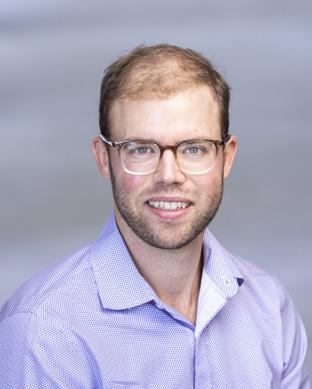
“PM2.5 from coal has been treated as if it’s just another air pollutant. But it’s much more harmful than we thought, and its mortality burden has been seriously underestimated,” said lead author and Assistant Professor Lucas Henneman
“These findings can help policymakers and regulators identify cost-effective solutions for cleaning up the country’s air, for example, by requiring emissions controls or encouraging utilities to use other energy sources, like renewables.”
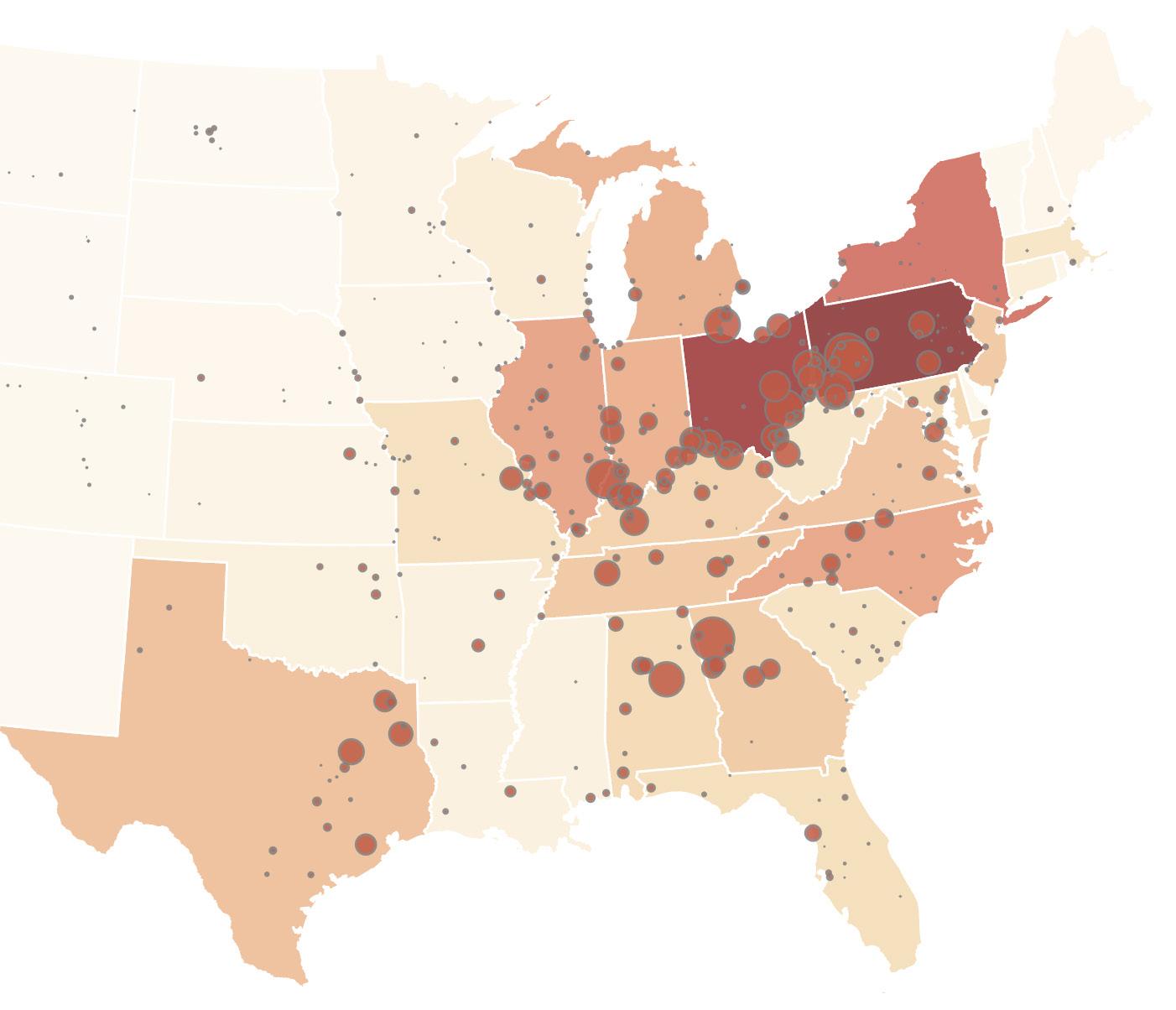
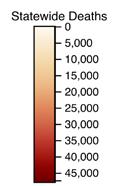
The researchers were also able to quantify deaths attributable to specific power plants, producing a ranking of the coal-fired power plants studied based on their contribution to coal PM2.5’s mortality burden. They found that 10 of these plants each contributed at least 5,000 deaths during the study period. They visualized the deaths from each power plant in a publicly available online tool (cpieatgt.github.io/cpie).
The study also found that 390,000 of the 460,000 deaths attributable to coal-fired power plants took place between 1999 and 2007, averaging more than 43,000 deaths per year. After 2007, these deaths declined drastically, to an annual total of 1,600 by 2020.
“Beyond showing just how harmful coal pollution has been, we also show good news: Deaths from coal were highest in 1999 but by 2020 decreased by about 95%, as coal plants have installed scrubbers or shut down,” Henneman said.
The researchers pointed out the study’s continuing urgency and relevance, writing in the paper that coal power is still part of some American states’ energy portfolios and that global coal use for electricity generation is even projected to increase. g
10 BUILDING A CHANGING WORLD 1 BUILDING A CHANGING WORLD


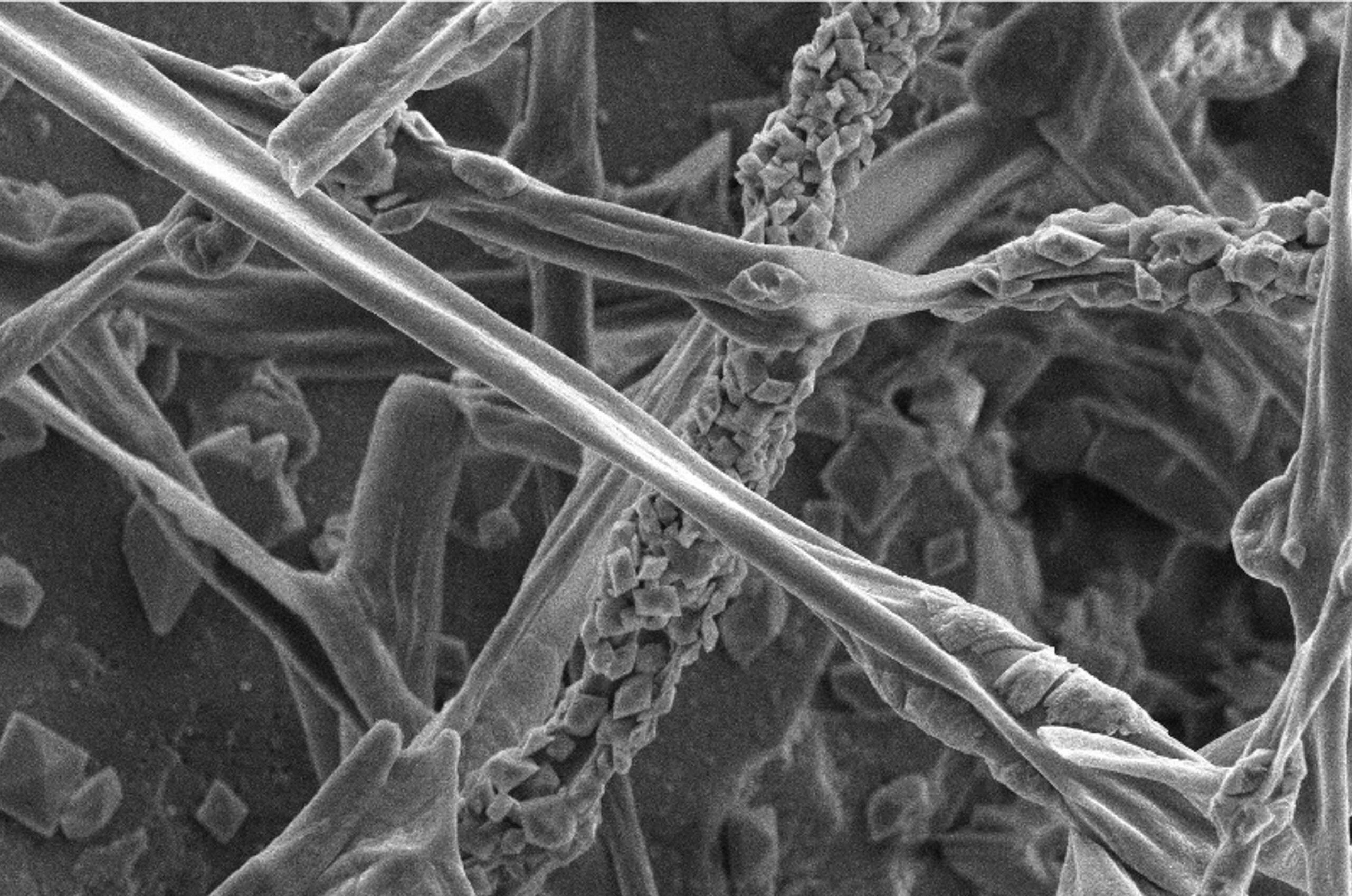
2 BUILDING BETTER
It’s important not to crowd mushrooms in a pan; otherwise they won’t cook properly, according to well-known American chef Julia Child. But Child likely didn’t realize that those mushrooms crowded together can accomplish impressive feats of engineering within concrete structures.
Xijin “Emma” Zhang, assistant professor in civil engineering at Mason, is working on exploring the use of fungi spores within infrastructure. The practice is relatively new, and Zhang is the first professor within Mason’s civil engineering department to work on incorporating fungi materials for sustainable building purposes.
“The research I’m very passionate about is exploring how to utilize natural resources to solve challenges within civil engineering,” Zhang said. “Although I am not a biologist, studying these natural solutions to engineering can help make complex solutions to infrastructure challenges simple.”
In Zhang’s research, the fungal fibers that make up the ‘stem’ part of the mushroom get mixed into the concrete mixture before the building process starts. If cracks later generate within the concrete structure, the air and moisture seeping through the cracks
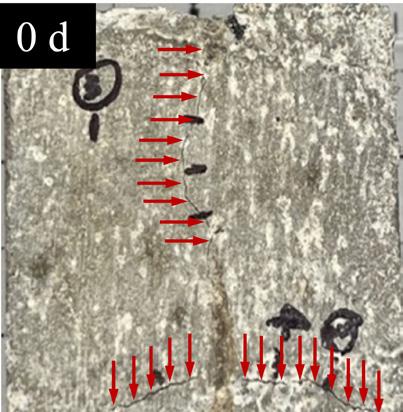
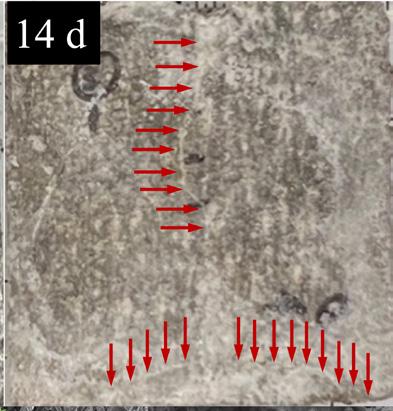
Mushrooming feats of engineering
activate the fungi spores. The fungi fibers ‘bloom’ and produce chemical minerals. The strong fungal fibers and the chemical minerals help heal the cracks.
“The healing of the cracks is facilitated by the growth of the fungal fibers and the fungi’s production of chemical minerals,” Zhang said. “This self-healing technology saves expensive and timely repairs to the structures.” g
Emma Zhang is exploring the use of fungi for sustainable building purposes. Below: Close-up images of fungal spores used in the study to mend cracks in concrete.



13
Big data may lead to safer roadways, lower emissions


With funding from the Virginia Department of Transportation (VDOT), Shanjiang Zhu and his research team, Anand N. Vidyashankar from the Department of Statistics and Chenfeng Xiong from the Civil and Environmental Engineering department at Villanova University, will reconcile the travel data from three different sources—surveys, smartphones, and connected vehicles—into valuable travel information.
Previously transportation officials made decisions based on household surveys performed roughly once per decade, which asked selected households to record their travel behavior on a given day. With the advent of smartphones, similar data became available roughly every few minutes. Now, with an increasing number of connected vehicles on the road, that data is available in real time.
About a year ago, Zhu’s team won a competition hosted by VDOT to make the best possible use of connected vehicle data, including newer vehicles like those with an “SOS” button installed. With such data, the accuracy and timeliness of travel demand models could be greatly improved. It also opens the door for new safety studies, Zhu said, adding that safety studies are currently based mainly on police reports after an accident has occurred. By using alternate data, such as how often a car’s brake deceleration rate exceeds a certain threshold or how hard a driver turns the steering wheel, dangerous locations might be addressed before an accident occurs. Zhu is interested in exploring the topic further using the data resulting from his current project. g
Top: Shanjiang Zhu (center) meets with guests in the John Toups Instructional Laboratory for Civil, Environmental, and Infrastructure Engineering. Bottom: Urban transportation scene at sunset. Right: Aerial view of urban highways show traffic patterns and flow.
14 2 BUILDING BETTER

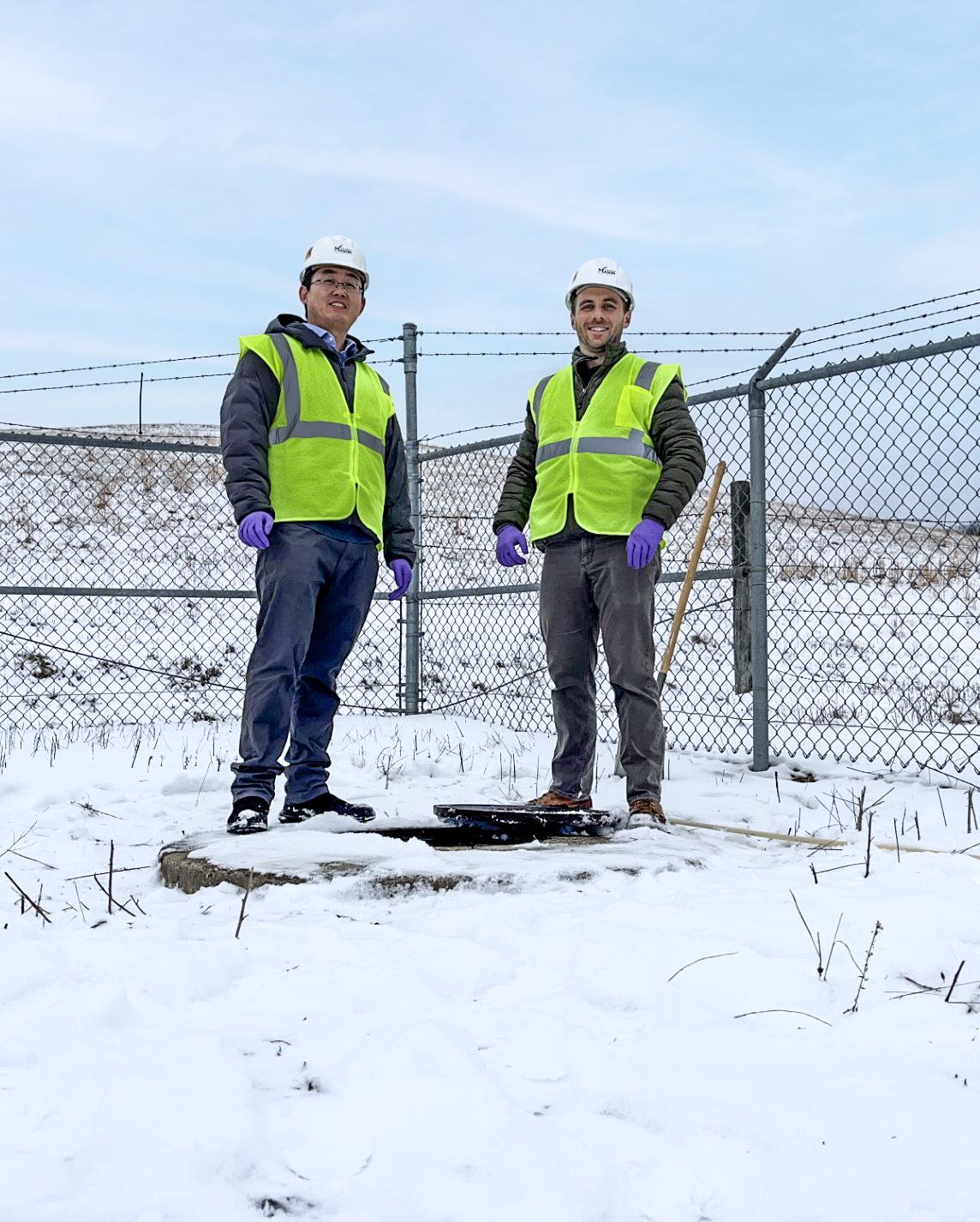
2 BUILDING BETTER
Most Americans don’t think much about their trash once they’ve taken it outside of their home, which is a testament to our country’s efficient garbage management system. Once that garbage truck rolls down the street, there’s a chance your trash is headed to one of the country’s roughly 3,000 operational landfills, and although it’s gone from your kitchen, the potential for that trash to contaminate the environment and harm people remains.
Assistant professor Kuo Tian recently received a grant from the U.S. Department of Agriculture to look at solid waste management service in rural locations, focusing on the potential health threats to groundwater.
Modern landfills have a composite liner system to collect leachate, a liquid that starts as rainfall (or melted snow) and pools at the bottom of the landfill after filtering through waste, pulling out chemicals and pollutants from the material. Leachate is held by a liner system, comprising a geomembrane—which is very resistant to puncture and is usually black in color because of carbon added for strength—on top of a layer of clay or geosynthetic clay liner, which serves as a containment redundancy. Small punctures in the membrane are inevitable, but leak detection techniques allow operators to examine the liner as it is put in place, identifying even tiny holes, which can be fixed before waste is layered on top.
Tian and his team will examine the potential for PFAS leaking through the landfill liner system and contaminating nearby groundwater. PFAS–per- and polyfluorinated substances–are a group of chemicals used to make coatings for a variety of products, commonly referred to as forever chemicals because they are persistent in the environment and in human bodies. Some evidence suggests they cause significant health problems.
The researchers will test both the types and concentrations of PFAS in leachate. Tian said, “We want to assess the PFAS concentration over a year, looking at precipitation
Limiting leaking leachate
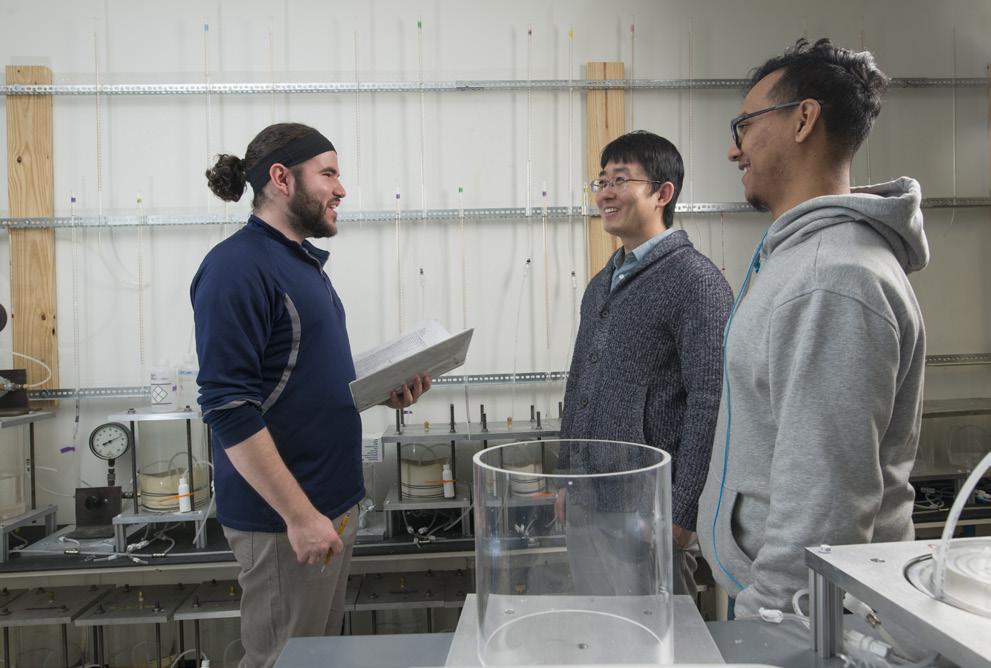
conditions, age of the landfill, and other factors.” The timing of the project is important, he says, because the Environmental Protection Agency only recently created PFAS standards for drinking water, though there are currently no regulations to check PFAS concentrations in landfill leachates. Understanding how landfills may contribute to groundwater contamination will aid landfill management moving forward.
According to Tian, a quality liner is critical. So even if high PFAS levels are found, they may not pose a risk. Further, he is concerned about PFAS migration to groundwater in older landfills, built prior to the early 1990s, which only use clay liners or in some cases lack liners entirely.
In addition to the research component, the grant contains funding for teaching elements. Once results from the research are confirmed, findings will be shared with local landfill operators and stakeholders. g
Left: Mason researcher Kuo Tian and doctoral student Benjamin Matthew Stark collect leachate for analysis at the Berkeley County Landfill in West Virginia.
Above: Tian (center) with students in the SGI Lab.
17
Mason’s ASCE teams competed in 2023
Every year, the American Society of Civil Engineers (ASCE) allows its college chapters to participate in competitions that showcase the engineering knowledge and finesse of civil engineering students across the country.
Two Mason ASCE teams – Team Surveying and Team Sustainable Solutions – participated and won in the annual competition, which was held in early spring of 2023. Led by Doaa Bondok, assistant professor of structural engineering and Mason ASCE faculty advisor, the Mason teams competed in challenges like the Steel Bridge Competition, Surveying Competition, and Sustainable Solutions.

“These competitions present fun challenges where students extend their engineering knowledge, think through concepts, create innovative solutions, and consider sustainability practices in their final designs,” said Bondok.
“My role as faculty advisor is to support the teams to achieve their goals,” said Bondok. “Personally, I see the most significant aspect of my role is to encourage and motivate the students to overcome challenges along the way, help them grow professionally, uplift their spirit, and just being there for them.”
According to Bondok, being an ASCE student member is a rewarding experience that offers the chance to participate in and work on projects that may not be taught within a classroom and work closely with professional mentors in industry.
Nicholo Gadiana, a Mason ASCE alumnus, was the project lead of the Sustainable Solutions Competition in 2022.
“One thing I would advise to anyone interested is don’t be afraid to let your ideas be heard,” said Gadiana, who underscored the value of being a member of the ASCE chapter. “Students should start having the mentality of networking and interacting with students, professors, and industry professionals when joining ASCE. After graduation, this experience significantly improved how I approach other professionals in the industry.”
“Students have the ability to significantly improve their critical thinking abilities, gain management skills, and have a strong role on their resume that helps them be well-rounded and competitive as job candidates,” said Bondok.
The Mason ASCE chapter also received an honorable mention for their outstanding activities in 2022. g
CEIE students during the ASCE Steel Bridge Competition.
18 3 BUILDING A STRONGER FUTURE

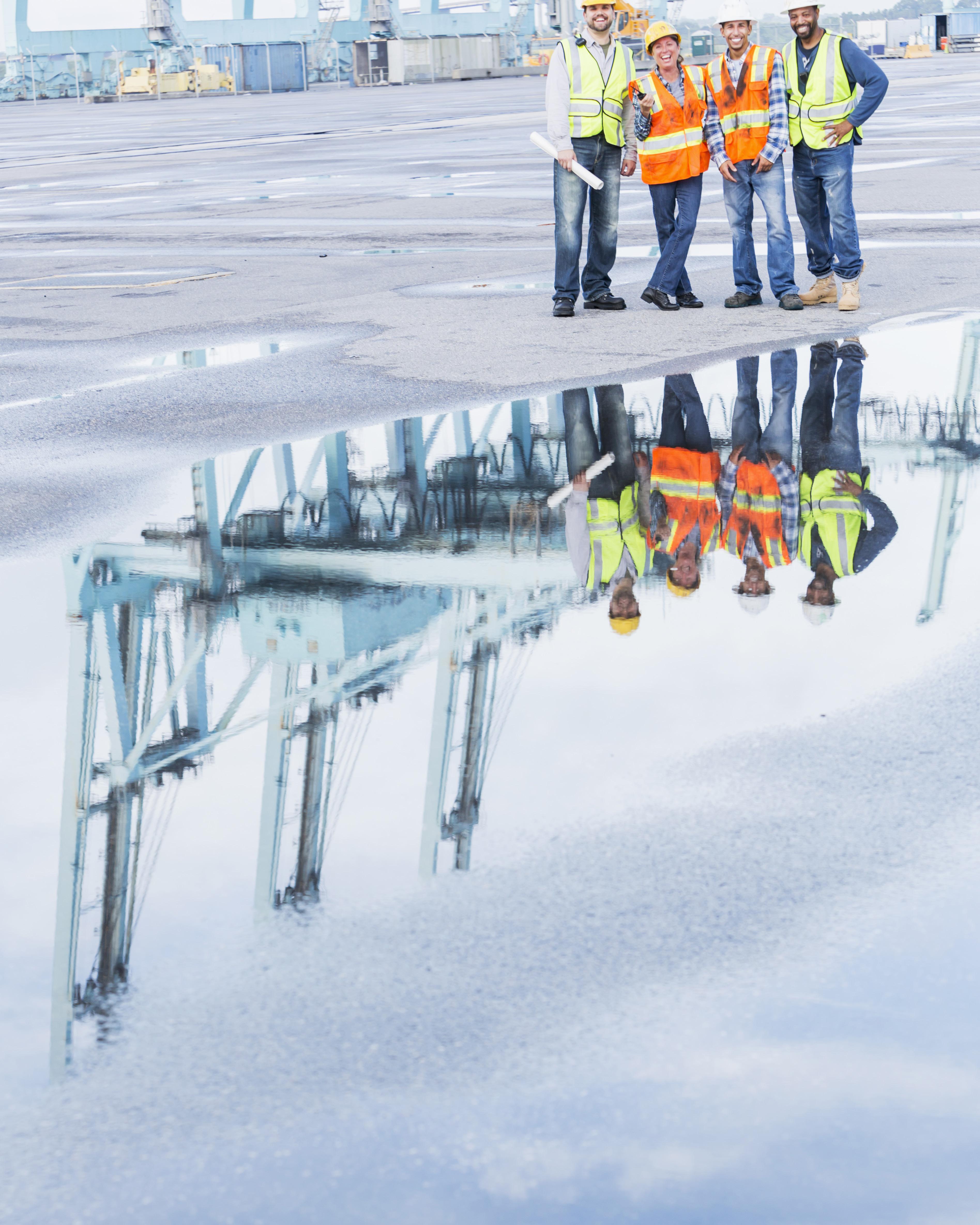
3 BUILDING A STRONGER FUTURE
Civil engineering student builds career from the ground up
There are many good reasons to choose Mason, according to civil engineering student David Prester One of which—the rockstar civil engineering professors that helped him grow his education and career.
“They’re above and beyond,” said Prester.
Rockstar Matt Doyle recommended Prester for an internship at CDM Smith, an engineering firm that focuses on providing smart solutions within water, environment, transportation, and energy.
Prester’s previous experience with Mason’s Engineers for International Development (EfID) water restoration project in Ecuador lined up perfectly for his work at CDM Smith, where he spent time outside analyzing and monitoring soil, traveling to excavation sites, and overseeing subsurface drilling.
“The work I was involved in looked at determining soil conditions for a variety of public works projects, and making sure field exploration work was regularly logged,” said Prester. “It was a mix of field and office work within the geotechnical engineering field.”
“I’ve always loved working outdoors and as I continued with school, discovered I love math as well,” he said. “Although I originally thought about a geology degree, geotechnical engineering opens up a lot more doors for me.” g

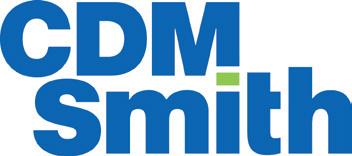
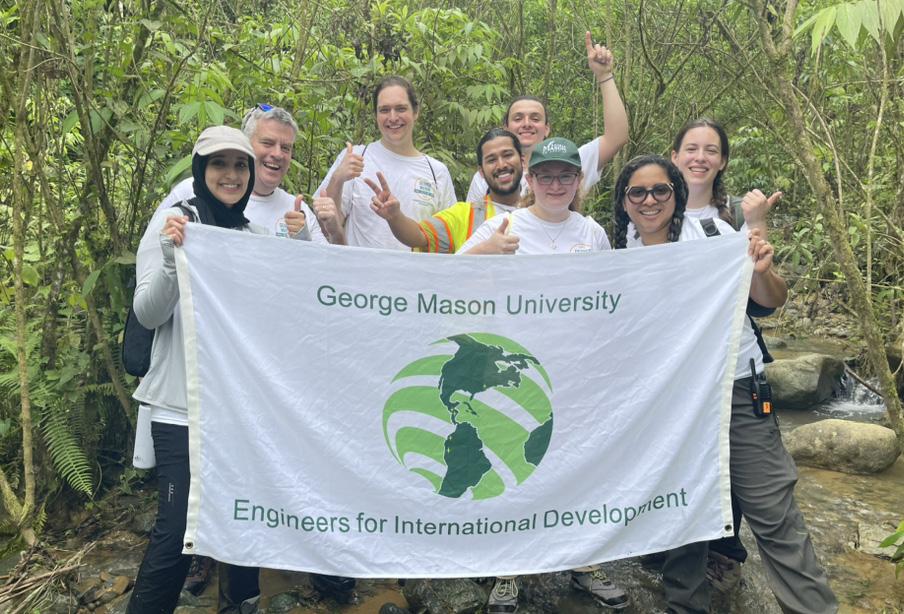
Headshot above: David Prester’s real-world experience included an internship with engineering firm CDM Smith and as a volunteer with Mason’s EfID.
21
INTERNSHIP
2023 Civil engineering graduates
FALL 2023
Bachelor of Science Degrees
Abdirahman Abdullahi
Ali Adnan
Adam Alamin
Saif Alnaqbi
Bilal Arouna
Alexandra Ball
Ian Bednarek
Adam Bradford
Ryan Britton
Melissa Cantsilieris
Jessica Capayachi
Handi Chen
Daniel Deiboldt
Cristhian Estupinan
Benjamin Falcone
Soroush Falsafitonekaboni
Margaret Freeman
Vincent Gaskin
Cristian Gomez Guevara
Fatima Granillo Peraza
Jonathan Guerra
Nikolas Hawley
Peter Lee
Ryah Nadjafi
Ana Peruza
Renato Rivasplata
Zachary Zaragoza
Master of Science Degrees
Samantha Babbitt
Eyan Abel Bantebya
Rayan Elmisurati
Sai Shreyas Gurijala
Venkata Teertha
Prasuna Kamireddi
Naveen Padmanabha
Varma Kothapalli
Parviz Sharifi
Gurfateh Singh
Igor Tronin
Sree Rahul Sai Vanapari
Vaishnavi Vodela
Doctor of Philosophy Degrees
Emre Akmaz
Qiang Chen
Karim Elkadi
Dong Li
SUMMER 2023
Bachelor of Science Degrees
Ibraheem Bashatah
Gerardo Cardenas
Ali Dehrab
Master of Science Degrees
Getu Abyu
Ruqayah H S H S A A
Alsayed Ebrahim
Yehia Elsheikh
Alistair Garden
Doctor of Philosophy Degrees
Yitong Li
Bahar Shahverdi
Weiwen Zhou
SPRING 2023
Bachelor of Science Degrees
Emmanuel Afrane
Enzo Aguilar Ormachea
Mohamed Alblooshi
Alphonse Alfonso
Nayeli Arriola
Shimanta Barua
Skylar Bulkley
Timothy Contos
Phillip Dang
Ranka Dikenda
Rayan Elmisurati
Jhonn Nicholo Gadiana
Angela Gutierrez
Michael Hoffman
Sarmad Kayani
Oscar Lopez-Salas
Shea Loska
Kyle Mckeever
Thomas McMahon-Kellermann
Tyler Mooney
Musanna Nasher
Trevaughn O’Neil
Chi Park
Dayana Peralta Mendoza
Roberto Polverino
Mauricio Ramos
Dorothy Raymond
Camila Renjel Herbas
Daniel Rivera Ramos
David Romero
Tiffany Tabor
Eryn Undan
Christian Valencia
Phouphaxay Vongkhily
22 3 BUILDING A STRONGER FUTURE
Audrey Walsh
Aya Zabara
Adam Zadran
Dalia Zainal
Megan Zellner
Master of Science Degrees
Saad Alghamdi
Mutlu Gunduz
Kevin Nayan Kamdar
Sulaiman Kanu
Matthew Karalus
Taekkyun Kim
Noah Parquette
Deion Peele
Shivanan Singh
Paul Stoiber
Sanjay Tandan
Hafiz Usama Tanveer
Nikolas Tsiamis
Doctor of Philosophy Degrees
Aamir Ahmad
Felicio Cassalho
Ishrat Dollan
Immanuel John Samuel
Wenjie Li
Sohrab Mamdoohi
Mozhgan Momtaz

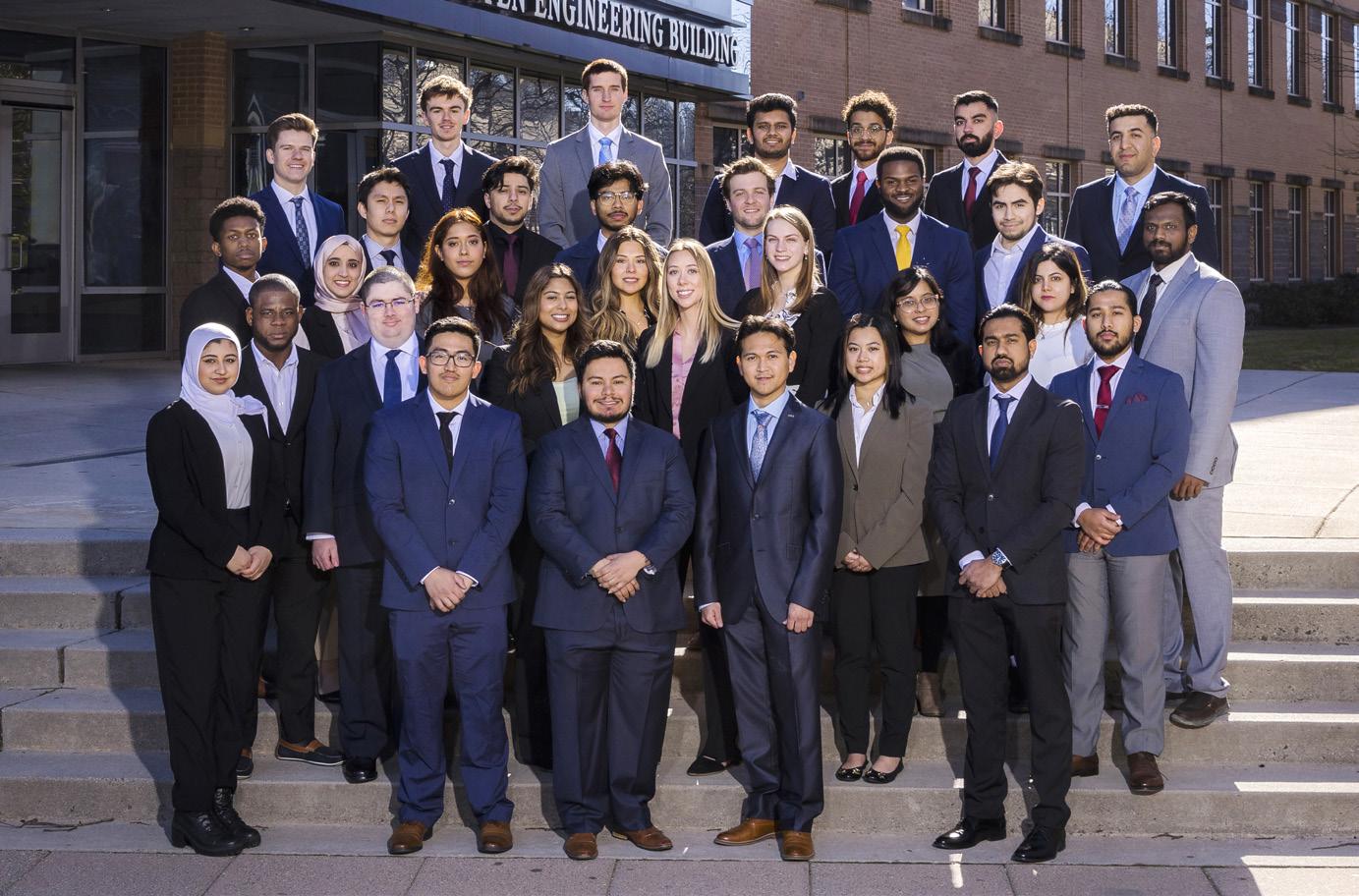
23

Nicholo Gadiana, student graduation profile
Nicholo Gadiana, a budding transit engineer, graduated Magna Cum Laude from Mason from the College of Engineering and Computing as a Civil and Infrastructure Engineer.
Gadiana says that upon graduating from Northern Virginia Community College, he wanted to find a university that would value his background as part of a minority group. “That is one thing I really love about George Mason University,” he says. “It’s the diversity and open-mindedness of the Mason community toward other cultures and backgrounds.” As a member of the LGBTQ+ community, and being a first-generation, immigrant transfer student, he desired to find a place where he belonged, and Mason always made him feel at home, with its student support resources and various clubs and organizations. Mason’s excellent engineering programs were also key.
Carpentry was Gadiana’s initial dive into engineering, and he has always been fascinated with how things are built. He recalls spending a great deal of his childhood desiring to be outside, building things. He says, “Civil engineering, by practice, is a very hands-on career and I love that. I want to be able to go to work, visit project sites, and interact with people. I also enjoy the math and science part of the civil engineering course load.”
In addition to that busy coursework, he was involved with extracurricular activities, pioneering the Sustainable Solutions Team of the Mason chapter of the American Society of Civil Engineers (ASCE). He says, “The thought of being part of something significant is gratifying. We won regionals and represented GMU Nationally at Louisiana Tech University. I also had an opportunity to represent Mason at the Construction Institute Student Days in South Carolina. And, finally, I was on the Executive Board of the ASCE Student Chapter, serving as Secretary.” And away from engineering, Gadiana notes that he found a sense of fulfillment getting involved with the campus Food Assistance Committee, volunteering at the Arlington Food Assistance Center.
The ASCE connection has been particularly important to him. “ASCE has been very pivotal to my academic success; my current internship was from attending an event for ASCE and I have expanded my network and connection with students, professors, and professionals through ASCE.”
After graduation he will be preparing for his Fundamentals of Engineering (FE) exam and recently accepted a fulltime position with Stacy and Witbeck, Inc. as a field/office engineer. He’ll be moving to California in August. “I do not have a concrete plan yet for my master’s degree however I do want to get that in the future. And eventually, God willing, I will become a professional engineer working on transit infrastructure to provide mobility and access to transportation to different parts of the country and cities.” Surely this Magna Cum Laude graduate will find success wherever he goes. g
24 3 BUILDING A STRONGER FUTURE
Student notable achievements
Several Mason civil engineering students also won ASCE National Capital Section scholarships: Amber Brown, previous ASCE student vice president, received $2,500; Phillip Hunt, current ASCE student vice president, received $1,500, and Kyler Resnick, ASCE recruiting and membership officer and the captain of the Steel Bridge Competition, received $1,500.
Matin Jahani, doctoral student in construction engineering and management, was awarded the 2023 CMAA National Capital Chapter (NCC) Scholarship Award by the National Capital Chapter Scholarship Committee of the Construction Management Association of America (CMAA). The award was presented at the annual CMAA National Capital Awards banquet. She currently works as a research assistant with Professor Siddhartha Sikdar in The Center for Adaptive Systems of Brain-Body Interactions (CASSBI).
Kadmiel Bediako Adusei won one of the department’s 2023 Outstanding GTA awards. Kadmiel is pursuing a PhD in Environmental Engineering, where he works in Assistant Professor Kirin Furst’s lab. He plans to pursue a career in academia and/or research after completing his PhD.
Yitong Li won the other 2023 Outstanding GTA award. Yitong graduated in 2023 with her PhD focusing on construction engineering and management. Throughout Yitong’s educational experience, she was inspired to become a researcher and mentor. As a result, she wants to pursue a career in academia. She is now a postdoctoral research associate at Rutgers CAIT: Center for Advanced Infrastructure and Transportation
The Michael J. Casey Endowed Scholarship was established to honor the life and contributions of Dr. Michael J. Casey, a former CEIE professor. The Casey Scholarship winners for 2023 are Shivanan Singh and Igor Tronin
Shivanan Singh graduated with a bachelor’s degree both in Civil Engineering from the University of Trinidad and Tobago and the University of the West Indies. His future plans include working in the United States in heavy construction and acquiring a professional engineering license. He has a strong interest in the design, planning, construction and rehabilitation of transportation infrastructure systems, especially highways and bridges. He currently works as a project engineer for Garney Construction.
Igor Tronin graduated from the Aerospace Department of Perm State Technical University (PSTU, Russia), with a degree in Designing of Gas Turbine Engines and Power Plants. He would like to dedicate his future career to making a positive impact on the construction industry. He currently works as a field engineer for Dragados USA.
Current doctoral student Soelem Aafnan Bhuiyan won a 2023 National Water Center Innovators Program Summer Institute fellowship. The Summer Institute is a sevenweek experiential learning program that brings graduate students together with academic researchers, other professionals, and National Water Center staff.
Current doctoral student Adriana Valentina Farias won a 2023 Washington D.C. Section Institute of Transportation Engineers (WDCSITE) Pat Timbrook Scholarship Award. This scholarship aims to recognize students for their hard work while encouraging them to fulfill their course work in transportation and pursue a career in transportation. g
25
CEIE faculty in university leadership positions

Ken Walsh, Executive Vice President for Strategic Initiatives, Chief of Staff, Interim Provost, and Professor. Before coming to Mason, he served as senior assistant dean and chief of staff at the Samueli School of Engineering at the University of California, Irvine. He was also a professor and chair of civil engineering at San Diego State University (SDSU), where he held the AGC-Paul S. Roel Chair in Construction Engineering and Management. While at SDSU, he was the founding dean of San Diego State University-Georgia in Tbilisi.

Deborah Goodings, Professor and Associate Dean for Graduate Programs, College of Engineering and Computing. Goodings’ previous appointments included: Director of the Civil, Mechanical, and Manufacturing Innovation Division at the US National Science Foundation; Dewberry chaired professor and chair of the Sid and Reva Dewberry Department of Civil, Environmental, and Infrastructure Engineering; professor of civil engineering at the University of Maryland; and geotechnical engineer at Tippetts-Abbett-McCarthyStratton Engineers and Architects in New York City.

Liza Wilson Durant, Associate Provost for Strategic Initiatives and Community Engagement, Professor and Associate Dean, and Director for the Commonwealth Cyber Initiative’s (CCI) Northern Virginia Node. Wilson Durant’s work aims to build meaningful partnerships across the university with external corporate, government, academic, non-profit, and global entities to support the mission of the college and university.

Girum Urgessa, Associate Professor and Director of Student Leadership and Success. Along with continuing as an active teacher and researcher, Urgessa will lead the implementation several new programs including the KEEN entrepreneurial mindset framework; formation of the Undergraduate Engineering and Computing Council that provides leadership and co-curricular opportunities; the development of innovative global student experiences beyond traditional study abroad programs; and the formation of CEC-ACE (Arts with Engineering and Computing) club. g
26 INSTITUTE UPDATES
Faculty notable achievements

David Lattanzi, associate professor, was awarded the George Mason University 2023 Teaching Excellence Award and earned Special Recognition for High Impact Teaching. The Teaching Excellence Awards are institutional recognition of the significant work that faculty members devote to course planning and preparation; curriculum development; and innovative teaching, advising, and undergraduate and graduate mentoring.

Elise Miller-Hooks, professor and interim department chair, delivered an opening keynote talk on “People-Centric Models for Building Resilient Infrastructure Systems and Services” at the International Conference on Resilient Systems (ICRS) 2023 in Mexico City. She also served as Chair of the Roundtable on Transport System Resilience for the International Transport Forum of the Organization for Economic Co-operation and Development (OECD) headquartered in Paris.

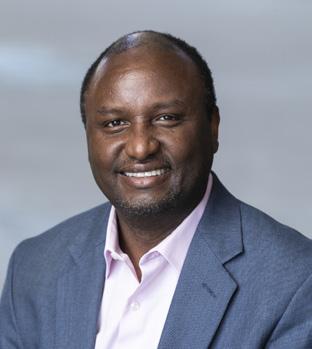
Girum Urgessa, associate professor, delivered the keynote talk on “Differences and Similarities between Air Blast and Underwater Explosions” at the 25th Defense Operational Applications Symposium in Brazil. He also taught a one day mini course at the Aeronautics Institute of Technology.

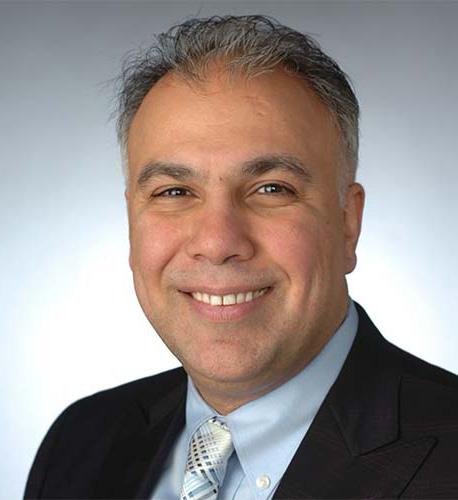
Sam Salem, professor, participated and presented as a Blue Zone delegate, at the UN Climate Change Conference COP 28 that took place in Dubai in early December 2023. He was invited by the United Nation Center for Environment and Development for the Arab Region and Europe (CEDARE) to speak about nature and smart-based approaches to climate change challenges in Middle Eastern cities, including digital transformation and adaptation solutions. g
27
Full-time faculty
Our faculty members—who combine practical experience with in-depth scholarly studies—instruct students, guide them, and make them partners in advanced research projects.
David Binning, PE, Instructor and CEC Director of Assessment and Accreditation. MS, University of Delaware. Expertise: water resources engineering.
Doaa Bondok, Assistant Professor. PhD, University of Missouri-Columbia. Expertise: structural engineering, blast analysis and design of steel structural walls and roof systems.
Liza Wilson Durant, Professor, Associate Provost for Strategic Initiatives and Community Engagement. PhD, Johns Hopkins University. Expertise: Environmental engineering.
Celso Ferreira, PE, Associate Professor. PhD, Texas A&M University. Expertise: Water-related extreme weather hazards and their impacts on infrastructure and societies, nature-based climate adaptation strategies.
Kirin Furst, Assistant Professor. PhD, Stanford University. Expertise: water treatment and wastewater reuse, distribution system and tap water quality, fate and transport of wastewater tracers and emerging contaminants.
Catalina Gonzalez Duenas, Assistant Professor. PhD, Rice University. Expertise: Risk and resilience assessment of infrastructure systems, performance‐based assessment of structural systems under multi‐hazard conditions, structural adaptation engineering for climate change.
Deborah Goodings, Associate Dean for Graduate Programs. PhD, Cambridge University. Expertise: geotechnical engineering.
Lucas Henneman, Assistant Professor. PhD, Georgia Tech. Expertise: air quality modeling, health effects of air quality interventions, environmental policy and equity.
Wenying Ji, Assistant Professor. PhD, University of Alberta. Expertise: construction engineering and data analytics, construction simulation.
Laura Kosoglu, Associate Professor and Associate Department Chair, Director of CEIE Graduate Programs. PhD, Virginia Tech. Expertise: geotechnical engineering, environmental geotechnics.
David Lattanzi, PE, Associate Professor and John Toups Faculty Fellow. PhD, University of Washington. Expertise: structural engineering, structural health monitoring, computer vision.
Viviana Maggioni, Associate Professor and CEIE Director of Undergraduate Affairs. PhD, University of Connecticut. Expertise: remote sensing, hydrometeorology, land data assimilation systems.
Elise Miller-Hooks, Professor and Interim Department Chair, Bill and Eleanor Hazel Endowed Chair in Infrastructure Engineering. PhD, University of Texas-Austin. Expertise: Infrastructure systems resilience, transportation systems optimization, disaster planning and response, sustainability.
Sam Salem, PE, Professor, CPC, LEED AP. PhD, University of Alberta. Expertise: construction engineering, lean and green construction, life cycle analysis.
Burak Tanyu, Professor. PhD, University of Wisconsin-Madison. Expertise: geotechnical engineering, engineering geology, geoenvironmental engineering, novel pavement construction methods.
Kuo Tian, Assistant Professor. PhD, University of Wisconsin-Madison. Expertise: geotechnical and geoenvironmental engineering, fate and transport of contaminants, innovative geomaterials.
28 INSTITUTE UPDATES
Girum Urgessa, PE, FASCE, Associate Professor and CEC Director of Student Leadership and Success. PhD, University of New Mexico. Expertise: structural engineering, progressive collapse and underwater explosion analysis, engineering education.
Mohan Venigalla, PE, FASCE, Professor. PhD, University of Tennessee. Expertise: transportation engineering, transportation planning, transportation air quality.
Ken Walsh, Professor, Executive Vice President and Chief of Staff, Interim Provost. PhD, Arizona State University. Expertise: lean construction, construction process improvement, residential construction.
Emma (Xijin) Zhang, Assistant Professor. PhD, Case Western Reserve University. Expertise: sustainable and resilient infrastructure through innovative nature-based solutions.
Shanjiang Zhu, Associate Professor. PhD, University of Minnesota. Expertise: transportation engineering, travel demand modeling, multi-modal mobility and infrastructure. g
Adjunct faculty
We recognize and thank the following professionals for their assistance to the department as practitioner adjunct faculty in 2023.
Ahmed Abu El Ela, PhD, UNC Charlotte
Asma Ali, PE, T3 Design Corporation
Rich Benton, PE, SR Benton & Associates, LLC
Barbara Chastel de Boinville
Cerasela Cristei, PhD, PE, EXP, US Services, LLC
Matthew Doyle, PE, Fairfax County Dept. of Public Works & Environmental Services
Amr El-Sayed, PhD, EIT, Lane Construction
Alex Faghri, PhD, PE, Virginia Department of Transportation
Erol Guler, PhD, Visiting Scholar, Bogazici University
Bill Haight, PE, WSP
Shahin Hajilar, PhD, PE, Stantec
Matthew Hardy, PhD, AASHTO
Joseph Hartmann, PhD, PE, Federal Highway Administration
Sean Kennedy, PE, Kennedy Structural Engineers, PLLC
Richard Lindenberg, PE, Wiss, Janney, Elstner Associates, Inc
Michael Loulakis, Esq., Capital Project Strategies
Joe D. Manous, PhD, PE, U.S. Army Corps of Engineers
Maria Martchouk, PhD, NOVA
Alireza Mohebbi, PhD, PE, Jacobs
Christopher Reseigh, PE, Consultant (Ret Parsons Brinckerhoff)
Harold Rodriguez, PE, William H. Gordon & Associates
Joseph Schroedel, PhD, PE, Society of American Military Engineers
Velmurugan (Vel) Subramanian, PhD, PE, Atkins
Tuonglinh (Linh) Warren, PE, Federal Highway Administration g
29
CEI current members
The CEI Board of Directors meets regularly to conduct its business, interact with the department, and report on committee activity. Directors are elected by the CEI membership and serve three-year staggered terms. The board elects its officers from among its ranks.
EXECUTIVE COMMITTEE
Chair: George Guszca, D.Eng, CPEM, CCM – Michael Baker International
Vice Chair: Helman Castro, PE – Fairfax County
Treasurer: Brian Chromey, PE – Wetland Studies Solutions Inc.
Executive Director: Elise MillerHooks, PhD – Interim Department
Chair, Bill and Eleanor Hazel
Endowed Chair in Infrastructure Engineering
BOARD MEMBERS
TERM EXPIRING
DECEMBER 2024
S. Richard Benton, PE, F.ASCE, DBIA – SR Benton & Associates LLC
Helman Castro, PE – Fairfax County
Jamie Bain Hedges, PE –Fairfax Water
Douglas Kennedy, PE – Pennoni
Michael E. Post – Shirley Contracting Company LLC
Christopher Reseigh, PE –WSP (Ret)
TERM EXPIRING
DECEMBER 2025
Carmen Bere, PE – Fairfax Water
Cerasela Cristei, PhD, PE –EXP, US Services, LLC
Ingrid Davis-Colato – Michael Baker International
George Guszcza, D.Eng, CPEM, CCM – Michael Baker International
Hardeep Rana, PE – Washington Gas (Ret)
John F. Roddy – William A. Hazel Incorporated
Terry Suehr, PE, PMP, DBIA –City of Alexandria
Cathy Trent, PE – Washington Gas
TERM EXPIRING
DECEMBER 2026
Brian Chromey, PE – Wetland Studies and Solutions Inc.
Bill Haight III, PE, F. SAME
Joe Manous Jr., PhD, PE – Institute for Water Resources, USACE
Kelsey Ryan, PE – Gordon
Kurt Thompson PE – Dewberry
MEMBER ORGANIZATIONS AND REPRESENTATIVES
Balfour Beatty Construction –
Alan Le
Bowman – Brad Gladfelter, PE
Dewberry – Kurt Thompson, PE
ECS Mid-Atlantic, LLC – Melissa McGarry
Fairfax County – Helman Castro, PE
Fairfax Water – Jamie Bain Hedges, PE
Garney Construction – Immanuel Samuel
Gordon – Kelsey Ryan, PE
Michael Baker International – George Guszcza, D.Eng, CPEM, CCM
Pennoni – Douglas Kennedy, PE
Shirley Contracting Company, LLC –
Michael E. Post
Washington Gas – Cathy Trent, PE
Wetland Studies and Solutions Inc. –Brian Chromey, PE
William A. Hazel Inc. – John F. Roddy
WSP – Bill Haight III, PE, F. SAME
INDIVIDUALS
Richard Benton, PE, F.ASCE, DBIA
Cerasela Cristei, PhD, PE
Abdul Hammadi, PE
Stuart Harrison
Hank Hatch, PE
Lara Hegler, PE
Stephen D. Lisse, PE
Joe Manous Jr, PhD, PE
Billy Mailem
Hardeep Rana, PE
Christopher Reseigh, PE
Terry Suehr, PE, PMP, DBIA
30 INSTITUTE UPDATES
CEIE FACULTY (EX-OFFICIO)
David Binning, PE
Doaa Bondok
Liza Wilson Durant
Celso Ferreira, PE
Kirin Emlet Furst
Catalina Gonzalez-Duenas
Deborah Goodings
Lucas Henneman
Wenying Ji
Laura Kosoglu
David Lattanzi, PE
Viviana Maggioni
Sam Salem
Burak Tanyu
Kuo Tian
Girum Urgessa, PE
Mohan Venigalla, PE
Ken Walsh
Xijin “Emma” Zhang
Shanjiang Zhu
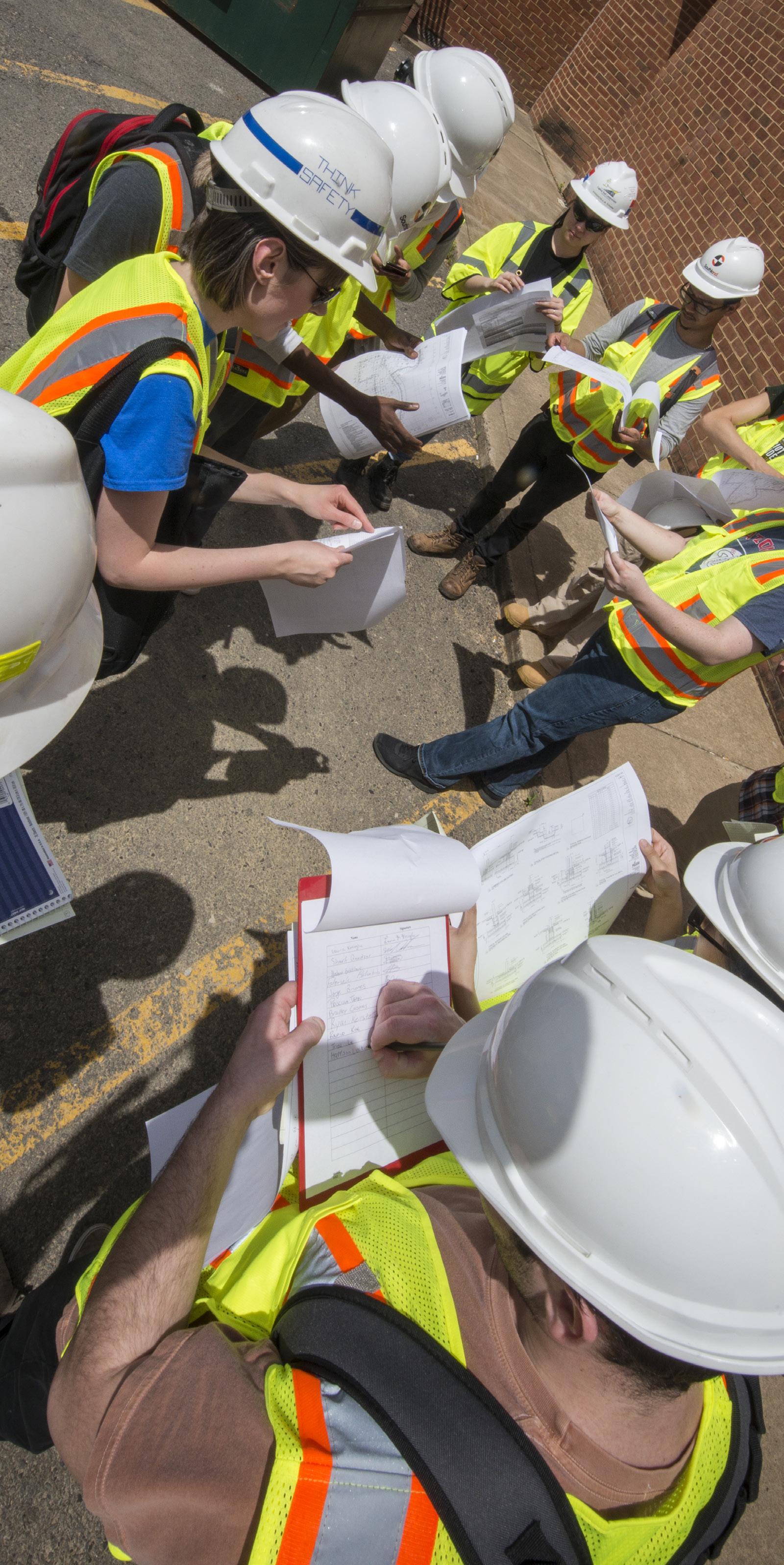
31
Snapshots from 2023 CEI luncheon
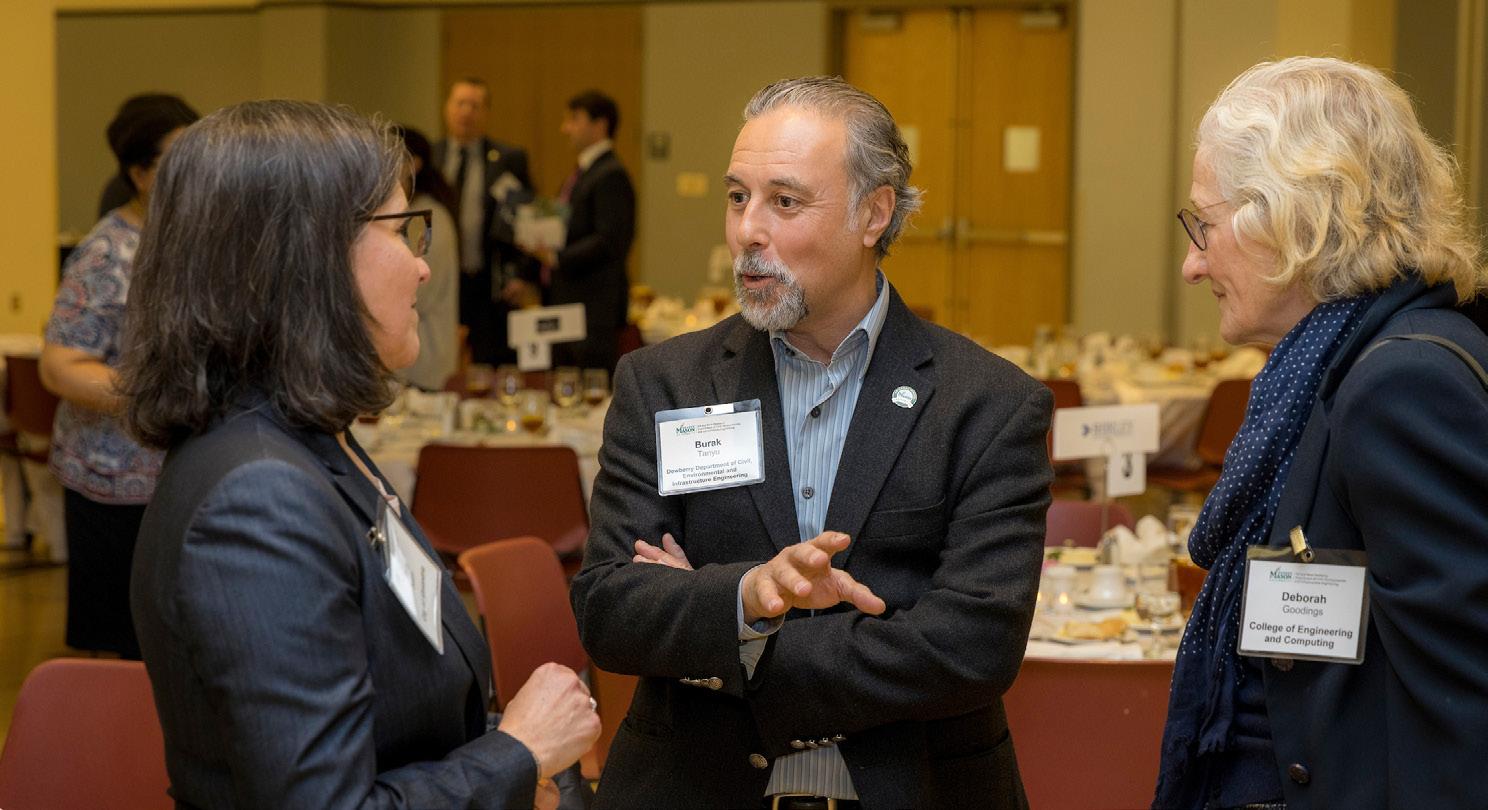
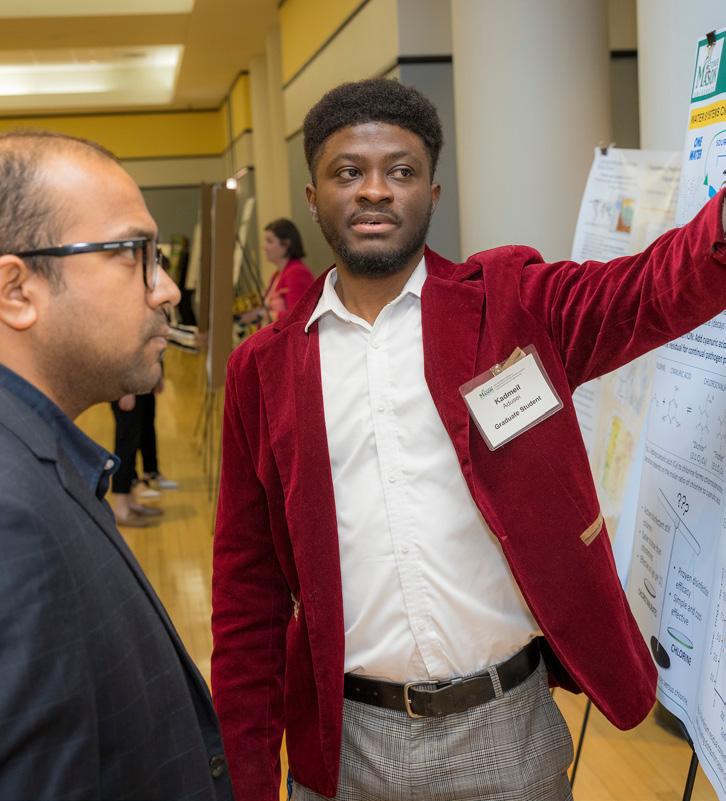

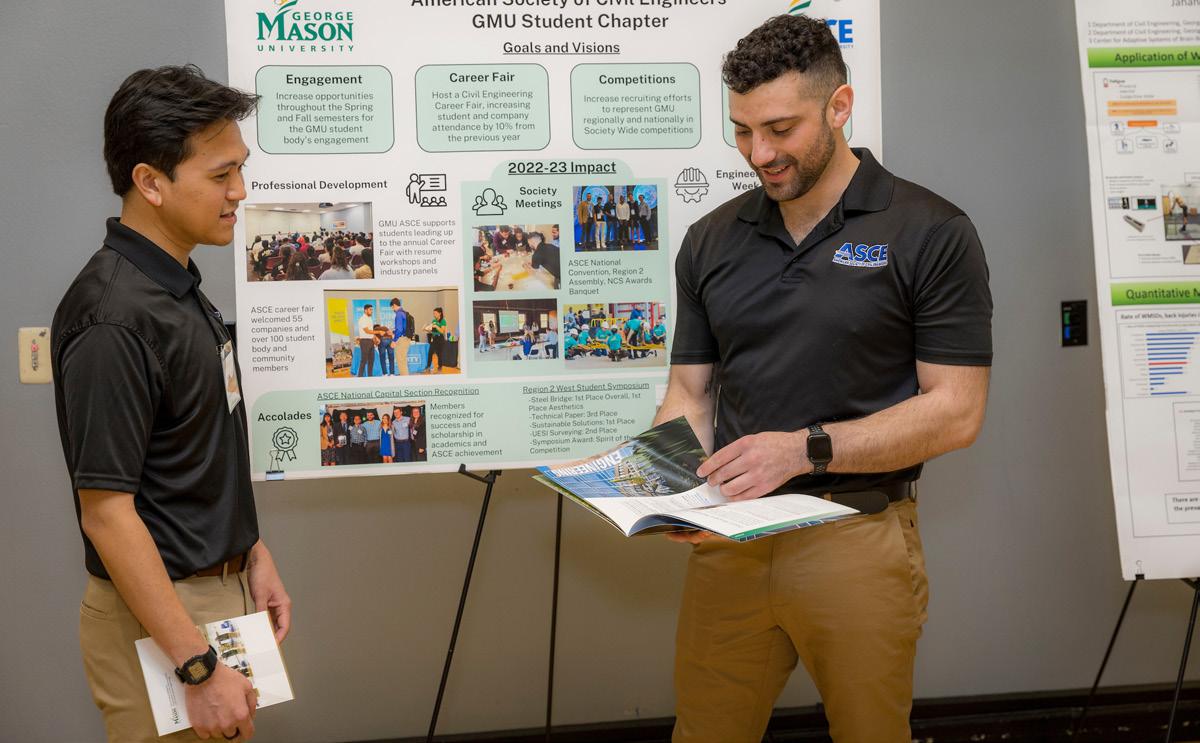
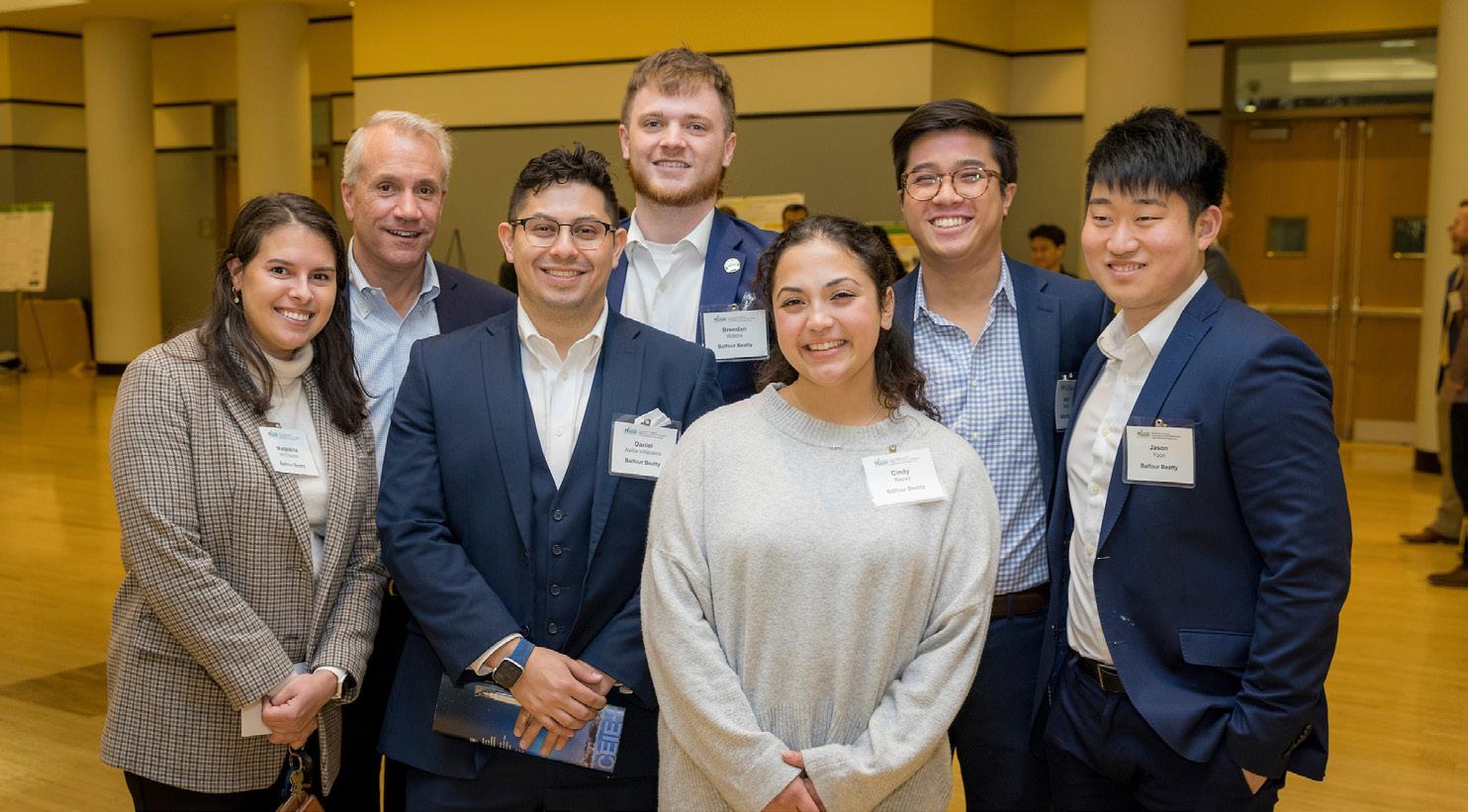

32 INSTITUTE UPDATES
2023
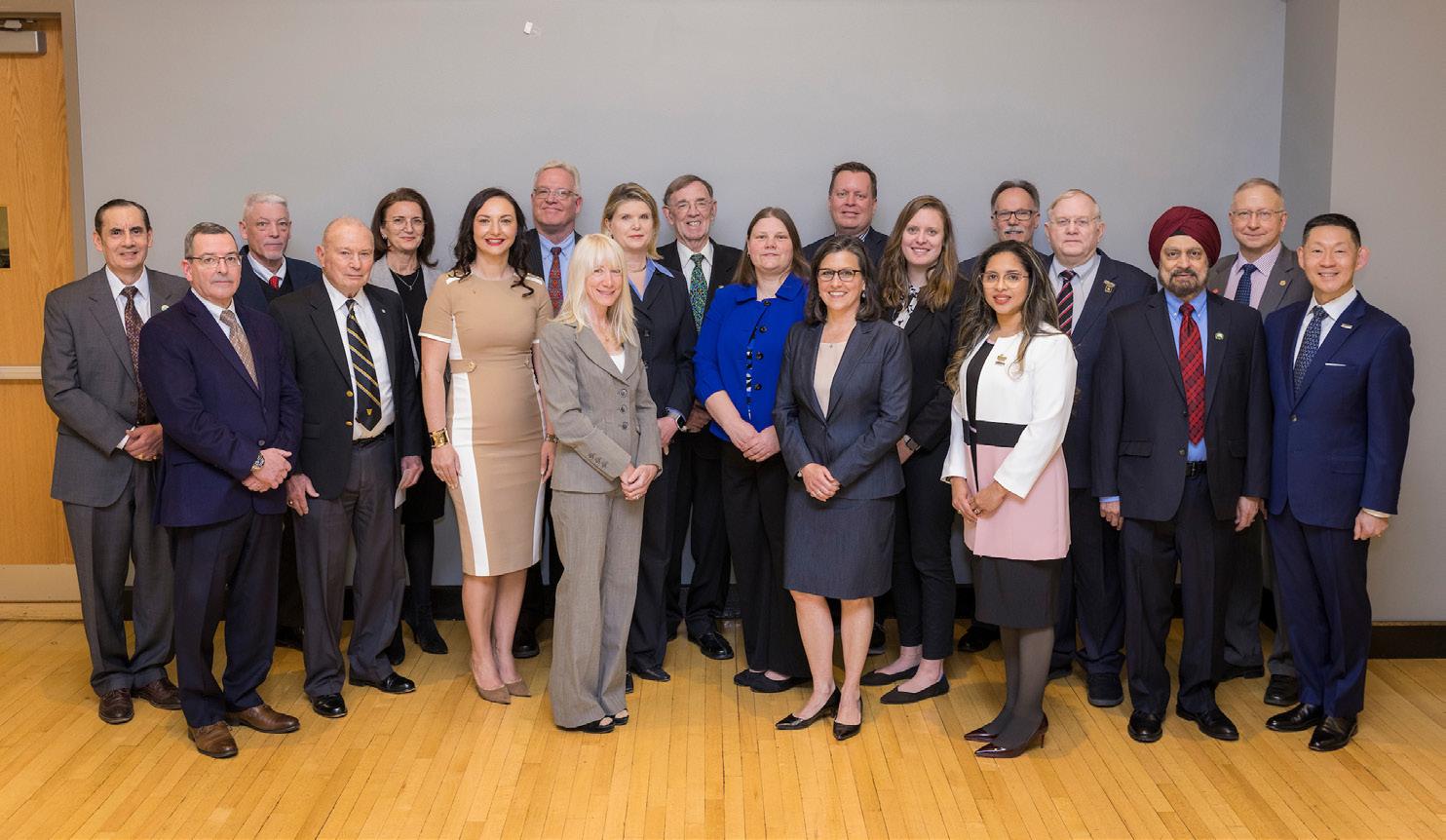

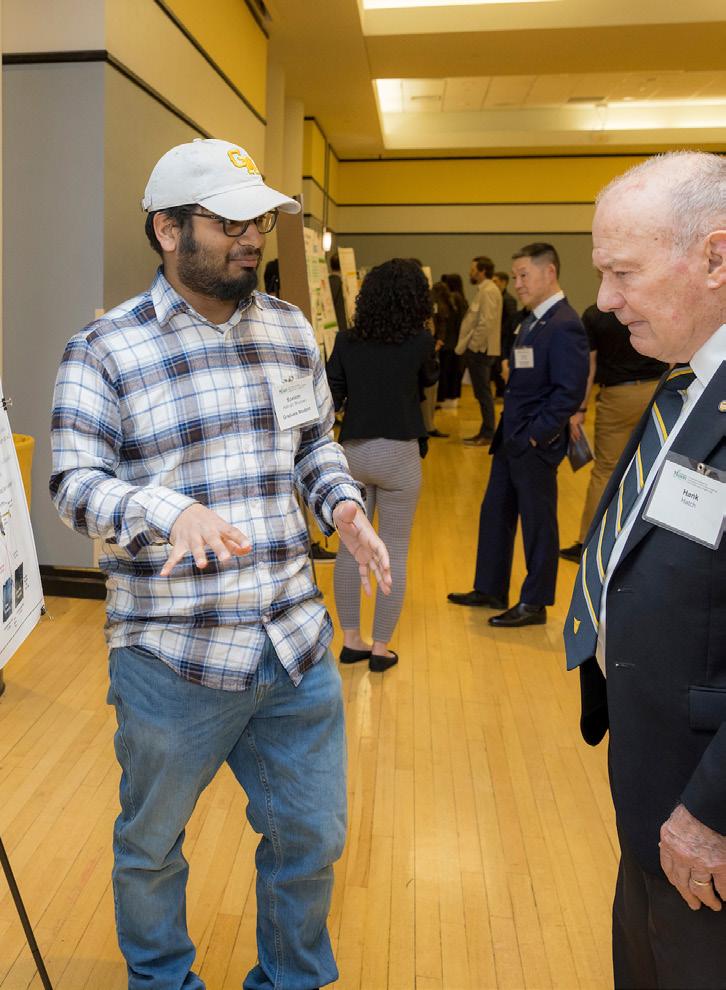



33

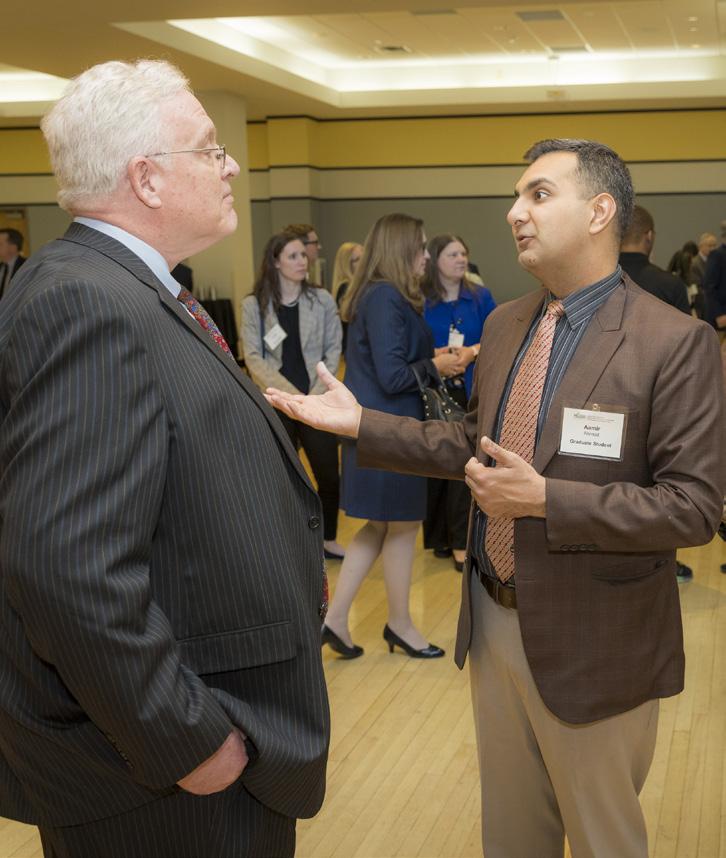




34 INSTITUTE UPDATES



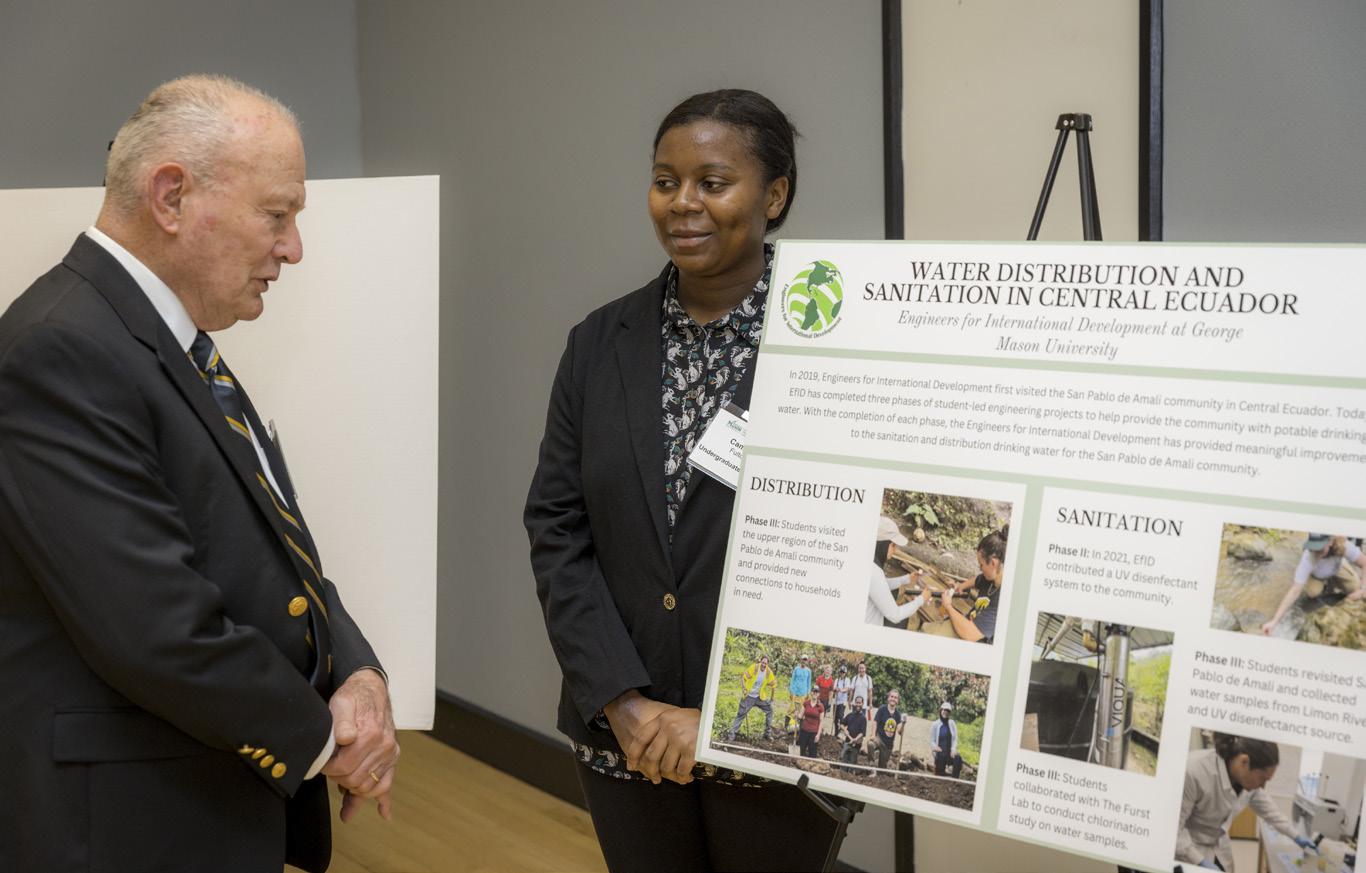

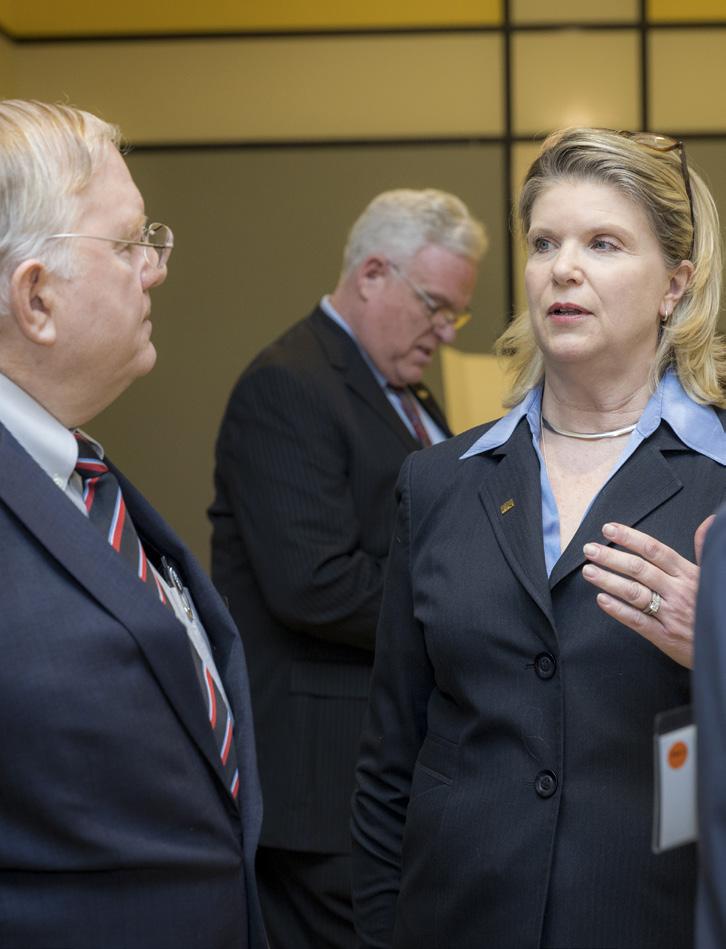
35
Donors make it possible
LUNCHEON HISTORY AND PREVIOUS AWARDEES
The CEI Luncheon serves as the institute’s annual meeting and award ceremony. The valuable work that Mason and our partners produce across disciplines to reimagine tomorrow is fueled by the generous contributions of gracious donors.
The CEI is a nonprofit organization chartered in 1989, with the purpose of assisting the Sid and Reva Dewberry Department of Civil, Environmental, and Infrastructure Engineering program. The objectives of the CEI include:
• Advising on curricula changes to keep the program on the leading edge of the professional practice;
• Providing a liaison with the business community for teaching and advising;
• Assisting in internship and co–op placement for students;
• Assisting in securing nationally recognized faculty by raising private eminent scholars’ endowments;
• Fundraising for scholarships, student activity support, and academic program assistance to supplement that which is provided by the university.
By participating in a variety of CEI activities— academic, leadership, educational, and social— companies and individuals become integrated into the most quickly advancing civil engineering program in the Washington, D.C. metropolitan region.
PREVIOUS WINNERS:
In recognition of Exceptional Leadership, Outstanding Lifetime Achievement, and Significant Contribution to the Profession of Civil Engineering
2006 – Carl Strock, Chief of Engineers, Lt. Gen. U.S. Army (Ret)
2007 – Patricia D. Galloway, PhD, president, American Society of Civil Engineers (Ret)
2008 – The Hon. Thomas Rust, Virginia delegate and chairman of Patton, Harris, Rust, and Associates
2009 – Sidney O. Dewberry, founder and chairman of the Dewberry Companies
2010 – Henry J. Hatch, Chief of Engineers, Lt. Gen. U.S. Army (Ret)
2011 – Joseph Hartman, PhD, bridge and tunnel team leader, Federal Highway Administration
2012 – Milton V. Peterson, founder and chairman, The Peterson Companies
2013 – Sean T. Connaughton, Secretary of Transportation, Commonwealth of Virginia
2014 – John T. (Til) Hazel Jr., Reed, Smith, Hazel, and Thomas (Ret)
2015 – Bob Chase, Northern Virginia Transportation Alliance
2016 – Wayne Clough, PhD, PE, Honorary Member of the American Society of Civil Engineers, National Academy of Engineering, secretary emeritus, The Smithsonian Institution
2017 – Stephen T. Ayers, AFIA, certified construction manager, LEED AP, the architect of the Capitol
2018 – Gerald E. Galloway, PhD, PE, Glenn L. Martin Institute Professor of Engineering, Department of Civil and Environmental Engineering, University of Maryland and faculty fellow of the Hagler Institute for Advanced Study Texas A&M University
2019 – James Patteson, PE, manager, countywide strategic planning, Fairfax County government
2020 – Paul Wiedefeld, PE, general manager and chief executive officer, Washington Metropolitan Area Transit Authority (awarded in 2021)
2022 – Jaimie Bain Hedges, General Manager, Fairfax Water
2023 – Lt. Gen. Thomas P. Bostick, 53rd Chief of Engineers and Commanding General, U.S. Army Corps of Engineers, Lt. Gen. U.S. Army (Ret)
36 INSTITUTE UPDATES
By the numbers
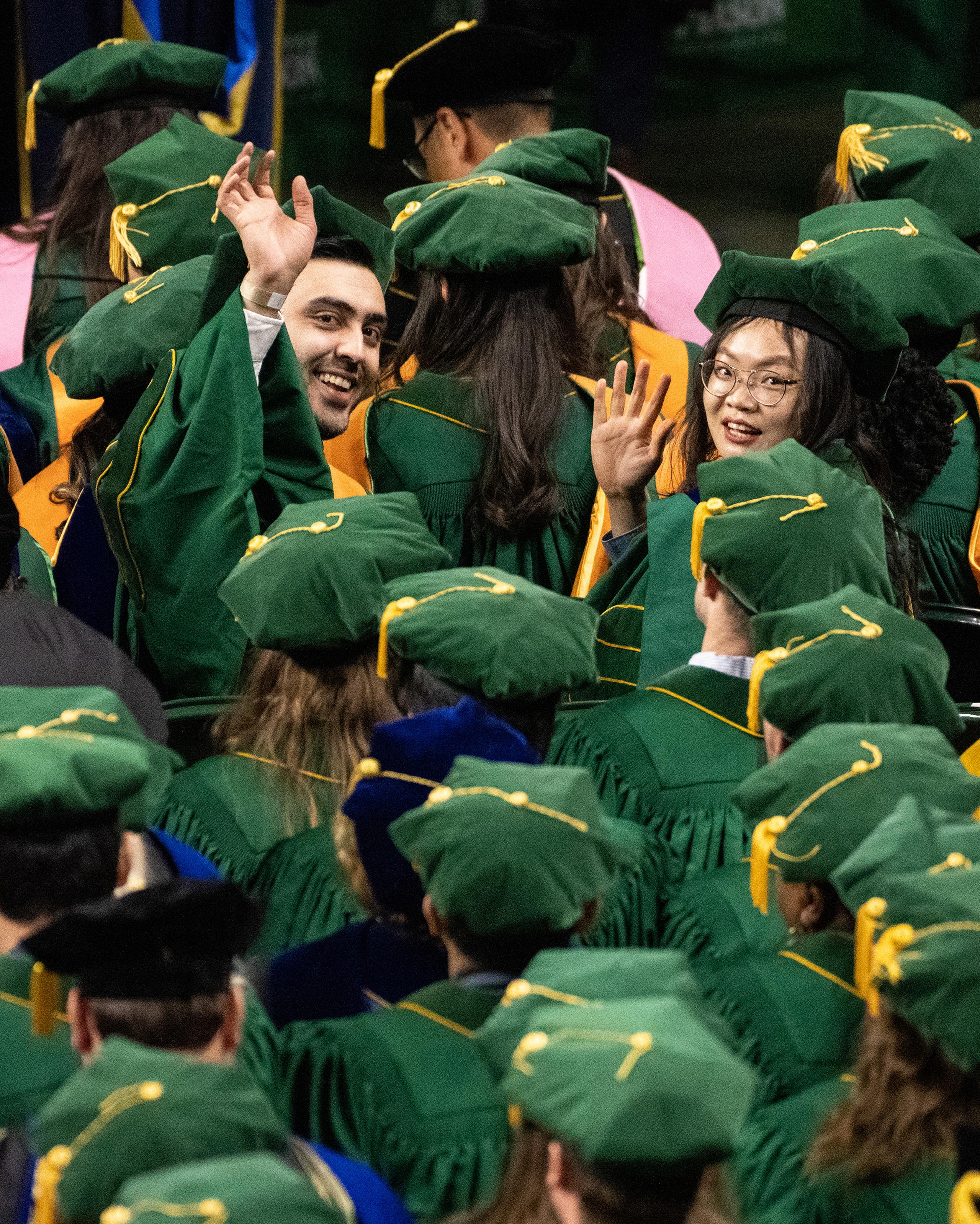
20% enrollment growth from 2022


14 doctoral
15.5 million graduates in 2023, a 43% increase from 2022
in research proposals, an increase of 58% over the previous year
68 MS students, undergraduate students are women
Half of CEIE MS students are out-of-state


304 undergraduate students from under-represented minority populations
(43%)
24% of the 304
37



Nguyen Engineering Building, Suite 1300 4400 University Drive, MS 6C1 Fairfax, Virginia 22030 703-993-1675 | ceie@gmu.edu civil.gmu.edu SID AND REVA DEWBERRY DEPARTMENT OF CIVIL, ENVIRONMENTAL, AND INFRASTRUCTURE ENGINEERING + CIVIL ENGINEERING INSTITUTE 2023 ANNUAL REPORT




 Elise Miller-Hooks, PhD, Professor, and Interim Department Chair
Bill and Eleanor Hazel Endowed Chair in Infrastructure Engineering
Elise Miller-Hooks, PhD, Professor, and Interim Department Chair
Bill and Eleanor Hazel Endowed Chair in Infrastructure Engineering

 George Guszcza, D.Eng, CPEM, CCM Chair, Civil Engineering Institute Board of Directors
George Guszcza, D.Eng, CPEM, CCM Chair, Civil Engineering Institute Board of Directors








































































